Other Workers
News Observer
White Jacksonville Gunman Targets Historically Black Community, Killing Three
By Stacy M. Brown NNPA Newswire Senior National Correspondent
A white man, described as being in his early twenties, went on a shooting spree in Jacksonville, targeting African Americans in a historically Black community and killing three people. The racially motivated shooting inside a Dollar General Store on Saturday, Aug. 26, was reminiscent of the Buffalo Tops Supermarket Shooting in May 2022, where a racist white man murdered ten Black shoppers and injured three others.
As of Sunday, authorities hadn’t identified the shooter but said that before the incident, the man had encountered resistance at Edward Waters University, a historically Black institution blocks from the crime scene. The school reported that the individual, who had been denied entry to the campus, subsequently left without incident. Despite the encounter’s peaceful resolution, the shooter’s intentions soon turned deadly. Following his expulsion from the university premises, the suspect armed himself with a bulletproof vest and mask before proceeding to the nearby Dollar General store. With an AR-15-style rifle and handgun, he unleashed a barrage of gunfire, first outside the store and then inside, before taking his own life.
Law enforcement officials declared the attack racially motivated, as evidence emerged indicating the shooter’s disturbing ideology of hate. He left behind written messages that espoused his abhorrent beliefs and utilized racial slurs, revealing a profoundly ingrained hatred against Black individuals. While investigators said they are still trying to comprehend the shooter’s motives and past interactions with law enforcement, it remains evident that this attack was targeted at Black people. “This shooting was racially motivated, and he hated Black people,” Jacksonville Sheriff T.K. Waters said during a hastily called news conference after the shooting.
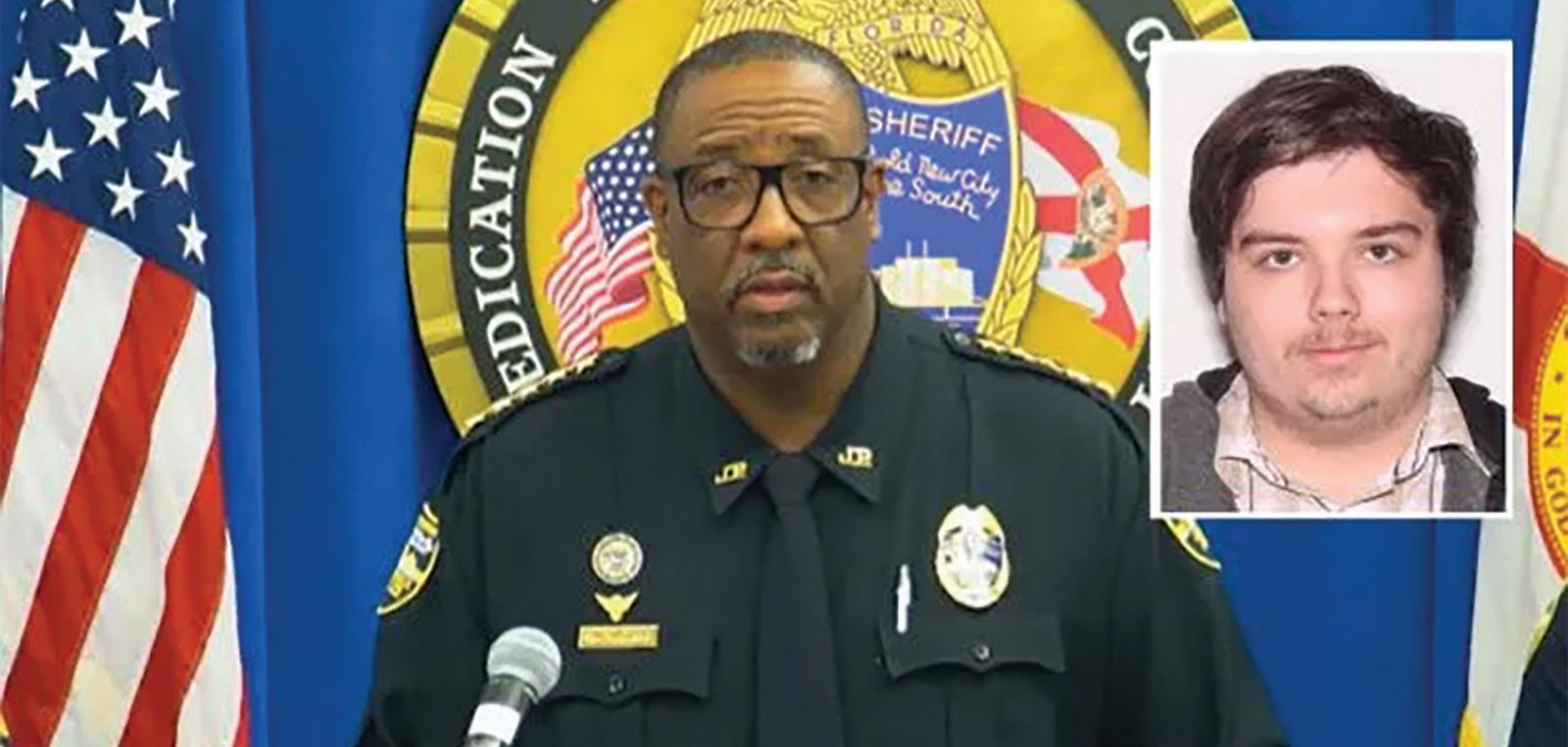
The tragedy reverberated beyond Jacksonville’s city limits, capturing the attention of both local and federal authorities on the same day that civil rights leaders commemorated the 60th anniversary of the iconic March on Washington for Jobs and Freedom. The FBI initiated a federal civil rights investigation into the incident, classifying it as a hate crime. Sherri Onks, the special agent in charge of the FBI’s Jacksonville office, emphasized to reporters the agency’s continued commitment to addressing and preventing racially motivated violence.
The shooting adds to what has been another tragic year of mass shootings. According to the Gun Violence Archive, there have been at least 472 mass shootings in the country in 2023. Many have said this has further highlighted the urgent need for comprehensive gun control measures. The pervasive presence of gun violence in everyday settings underscores the necessity of addressing this issue nationally. “This is a dark day in Jacksonville’s history,” Waters remarked. “Any loss of life is tragic, but the hate that motivated the shooter’s killing spree adds an additional layer to the heartbreak.”
Simone Biles Wows on Vault While Surging Into the Lead at the U.S. Gymnastics Championships
By WILL GRAVESAP National Writer SAN JOSE, Calif. (AP) –– Simone Biles did not come back to do a victory lap.
The gymnastics star sent a message on Friday night at the U.S. Championships, putting together a thrilling performance that included a show-stopping vault and looking ready for another shot at Olympic glory in Paris next summer.
The 26-year-old, wearing a bedazzled purple leotard and with her family adorned in matching T-shirts that read “Still I Rise,” posted an all-around total of 59. 300 that put a record eighth national title on Sunday well within reach.
As late as this spring, Biles was unsure about how dedicated she was to a return after dealing with a mental block known as “ the twisties “ that led her to remove herself from multiple finals at the 2020 Olympics to protect her own safety.
She dazzled in her comeback meet in Chicago this month. The 2016 Olympic champion was even better in front of an SAP Center crowd that roared every time she saluted the judges to start a routine.
They only grew louder when she finished them, particularly on vault, where her blend of power and precision can turn two seconds of flight into a spectacle. She flirted with a Yurchenko double pike in 2021, a vault so difficult few men attempt it and no woman has ever landed it in international competition. On Friday, she may have perfected it, racing down the runway before doing a roundoff onto the table followed by two backflips with her hands tucked behind her ramrod straight legs. Save for a small hop on the landing, it was essentially flawless. The judges agreed, awarding her a staggering 9.8 for execution. Her 15.7 point total was the highest of the night on any event even though it included Biles voluntarily taking a half-point neutral deduction so coach Laurent Landi could stand on the mat nearby in case things went awry on her dismount. Instead, he got a close-up view of an athlete that seems to be near the peak of her considerable powers.
While Biles wasn`t perfect –– she wobbled while mounting the balance beam, nearly botched her wolf turn and stepped out of bounds on floor exercise ––the gap between herself and the rest of a talented group of Americans appears just as large as it was nearly a decade ago.
Shilese Jones, the runner-up at nationals last year and a three-time silver medalist at the 2022 world championships, is second with a score of 56.550 that included a stunning 14.9 on uneven bars. Skye Blakely is third at 55.700, with Leanne Wong in fourth at 55.350 and 2020 Olympic silver medalist and three-time world championship medalist Jordan Chiles in fifth.
Reigning Olympic champion Sunisa Lee, who is battling a kidney condition that has limited her training, competed on vault and balance beam. Wearing a leotard inspired by Auburn –– where she competed for two seasons –– Lee did a watered-down Yurchenko full on vault and her beam routine was elegant, though she did hop off at the end of a series. The U.S. Championships are the last warmup before a camp next month in which the five-woman team that will head to Belgium for the world championships is selected. Biles, back as if she never left, should dust off her passport.
Los Angeles Lakers to Unveil Kobe Bryant Statue Outside Their Arena on Feb. 8
By Stacy M. Brown, NNPA Newswire Senior National Correspondent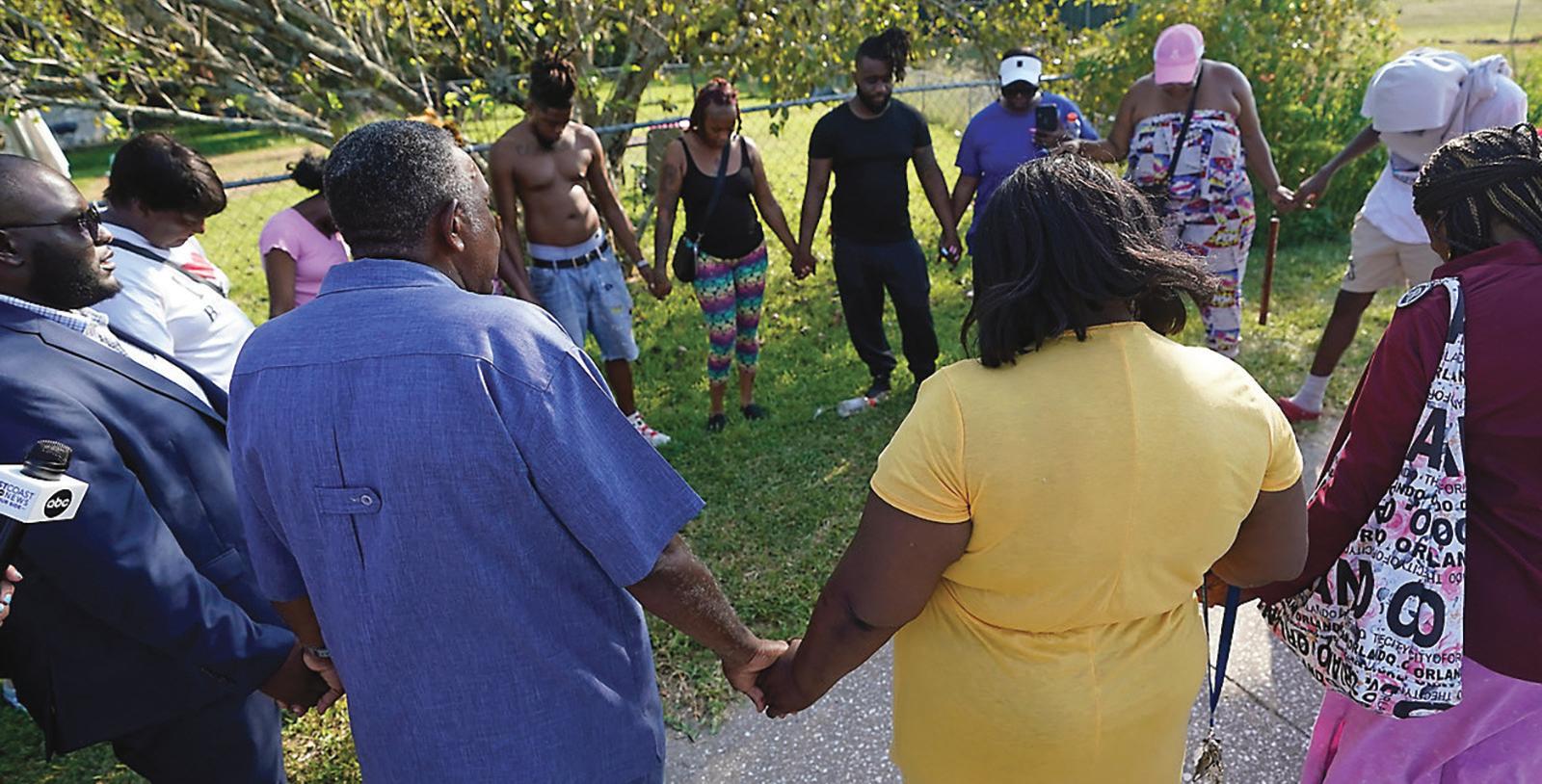
On the anniversary of the iconic March on Washington, civil rights leaders and a diverse coalition of allies convened at the historic gathering site to honor the legacy of Dr. Martin Luther King Jr. and advocate for renewed commitment to social justice. The event, convened by the Kings’ Drum Major Institute and the National Action Network, aimed to rekindle the spirit of the 1963 march, which played a pivotal role in advancing civil rights and voting rights legislation.
The original March on Washington, a cornerstone of the civil rights movement, drew approximately 250,000 participants in 1963. Its influence paved the way for significant legislative milestones, including the passage of federal civil rights and voting rights laws in the 1960s. The erosion of voting rights, recent Supreme Court rulings that impact affirmative action and abortion rights, and the rise of hate and violence against marginalized communities, however, punctuate the current commemoration.
Martin Luther King III, the eldest son of the civil rights icon, along with his sister Bernice King, visited their father’s monument in Washington on the eve of the event. Bernice King shared her reflections, stating, “I see a man still standing in authority and saying, ‘We’ve still got to get this right.’”
Addressing the urgency of the occasion, King III emphasized, “This is not a traditional commemoration. This really is a rededication.” Among the featured speakers was Ambassador Andrew Young, a close adviser to Dr. King during the original march and a key figure in the civil rights movement. Leaders from the NAACP and the National Urban League also delivered impactful remarks.
Arndrea Waters King also addressed the tens of thousands on the mall. “We are here to liberate the soul of the nation, the soul of democracy from those forces who want to have us all go backwards and perish rather than go forward as sisters and brothers,” she stated. “We will never betray those who marched for us, fought for us, lived for us, died for us. We are the children and grandchildren of their struggles, and we will be worthy of their sacrifices.”
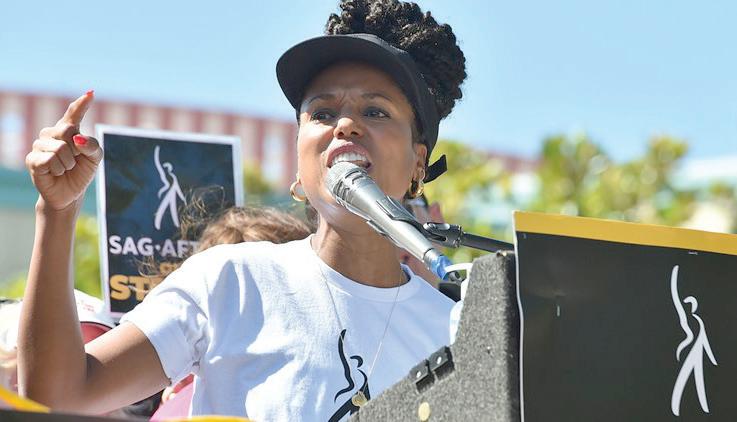
Several members of the Congressional Black Caucus, including House Minority Leader Hakeem Jeffries of New York also spoke during the event. “We’re here today to fight for voting rights,” urged Jeffries, the first Black congressperson to lead a major political party in Congress.
Demonstrator at the 1963 March on Washington for Jobs and Freedom. Photo: National Archives and Records Administration
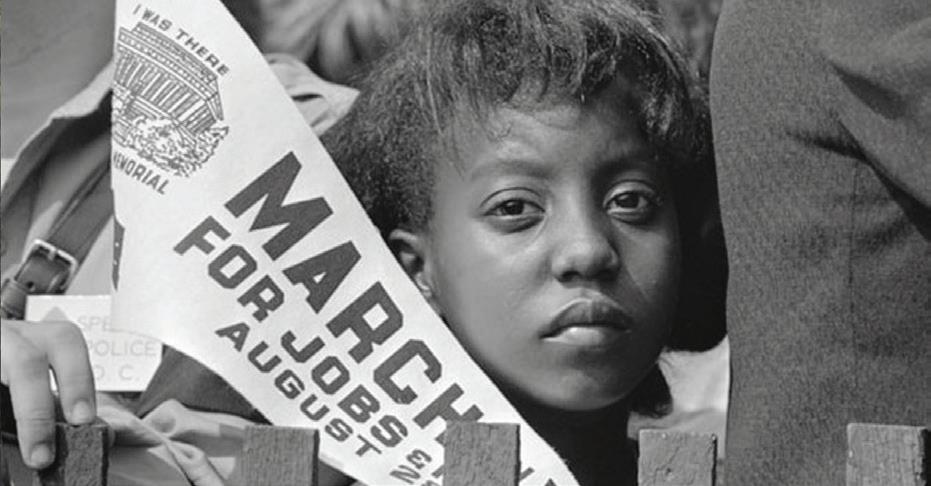
“We’re here today to fight for civil rights. We’re here today to fight for reproductive rights. We’re here today to fight for workers’ rights,” he said.
Notably absent from the program were several individuals who had worked closely with Dr. Martin Luther King Jr., such as Dr. Benjamin F. Chavis Jr. and the Rev. Peter Johnson, a Plaquemine, Louisiana, native and close aide to civil rights giant Andrew Young, and the Rev. Ralph Abernathy. Despite their significant contributions to the movement, they did not receive invitations to participate in the commemoration, shedding light on the challenge of preserving historical continuity and recognizing all those who played a role. However, Chavis was spotted among the crowd giving a hug to an unidentified Jewish man who had singled him out. “We were here 60 years ago, and we were both 15,” the man said to Chavis.
America’s “Black Attorney General,” civil rights lawyer Ben Crump embraced his hard-earned moniker, whipping the crowd into a frenzy by insisting that he would fight “until hell freezes over.”
“As your attorney general, I declare now more than ever, that we must be unapologetic defenders of Black life, liberty, and humanity,” Crump remarked. “Just like they try to ban our Black history, we must tell them without Black history, you would not have American history. Just as the fight for the families of Trayvon Martin, Eric Garner, Tyre Nichols and so many
others, Americans must now fight for Black literature and culture.”
Rev. Jesse Jackson, another prominent civil rights-era figure, wasn’t expected to attend due to ongoing health concerns. The absence of these veteran activists threw a damper on an otherwise remarkable occasion.
Ahead of the event, several organizers engaged in discussions with Attorney General Merrick Garland and Assistant Attorney General Kristen Clarke of the civil rights division. The talks encompassed crucial issues like voting rights, policing reform, and addressing redlining practices.
The commemoration served as a prelude to the upcoming 60th anniversary of the original March on Washington, which President Joe Biden and Vice President Kamala Harris plan to observe on Monday, Aug. 28. During that scheduled meeting, Biden and Harris will engage with organizers of the 1963 march as well as members of the King family, aiming to honor the legacy of the event and its enduring impact on the struggle for civil rights.
As Rev. Al Sharpton, founder of the National Action Network, reflected on the continuous observance of March on Washington anniversaries, he recalled a promise he made to Coretta Scott King, the matriarch of the King family. Twenty-three years ago, she urged him and Martin Luther King III to continue the movement’s legacy. Sharpton, who didn’t serve during the early civil rights movement like Chavis, Johnson, Young, Jackson, and others, expressed his dedication to this cause, emphasizing the need to persist despite setbacks in civil rights protections. The challenges the civil rights movement faced weren’t confined to the past; history revealed moments of triumph and tragedy. Following Dr. King’s landmark speech in 1963, dark incidents such as the 16th Street Baptist Church bombing in Birmingham and the abduction and murder of civil rights workers in Mississippi underscored the ongoing struggle. Those tragedies spurred the passage of pivotal legislation, including the Civil Rights Act of 1964 and the Voting Rights Act of 1965.
Bernice King, CEO of the Martin Luther King Jr. Center for Nonviolent Social Change, acknowledged the weariness that can accompany the enduring fight for civil rights. She invoked her mother’s wisdom, stating, “Mother said, struggle is a never-ending process… Vigilance
answer.”
By GREG BEACHAM AP Sports WriterLOS ANGELES (AP) –- The Los Angeles Lakers will unveil a statue of Kobe Bryant outside their downtown arena on Feb. 8.
The 17-time NBA champion Lakers announced the plan Thursday to honor Bryant, the fourth-leading scorer in NBA history and a beloved mainstay of the franchise for 20 seasons. Bryant and his daughter, Gianna, died in a helicopter crash in January 2020.
Bryant participated in the initial planning of his statue after his retirement in 2016, according to the Lakers. He is the sixth former Lakers player and seventh team employee to be honored with a statue in the so-called “Star Plaza” outside the arena, which has been the Lakers` home since 1999.
The 2/8/24 date of the unveiling is conspicuous: Kobe wore No. 8 and No. 24 during each half of his Lakers career, while Gianna wore No. 2 while playing youth basketball. The Bryants were flying together to a basketball competition with seven others when their helicopter crashed in fog in Calabasas, California.
Bryant`s statue will join those of Lakers greats Elgin Baylor, Shaquille O’Neal, Kareem AbdulJabbar, Magic Johnson, Jerry West and broadcaster Chick Hearn. Star Plaza also includes statues of the Los Angeles Kings` Wayne Gretzky, Luc Robitaille, Dustin Brown and announcer Bob Miller, along with champion boxer Oscar De La Hoya.
The Lakers say they are planning “a series of physical tributes” to honor Bryant beyond the statue, which is designed by sculptor Julie Rotblatt Amrany.
“Kobe Bryant was one of the most extraordinary athletes of all time and one of the most iconic individuals in the history of Los Angeles,” Lakers owner Jeanie Buss said in a statement. “There is no better place for Kobe to be honored with a statue than here at the center of our city, where everyone can celebrate him and be inspired by his incredible achievements.”
Not long after 7:30 p.m. EST., on Thursday, Aug. 24, 2023, Trump was booked into Fulton County Jail in Georgia.
World & Nation
Donald Trump Booked in Georgia; Mugshot Publicly Released
 By Stacy M. Brown NNPA Newswire Senior National Correspondent
By Stacy M. Brown NNPA Newswire Senior National Correspondent
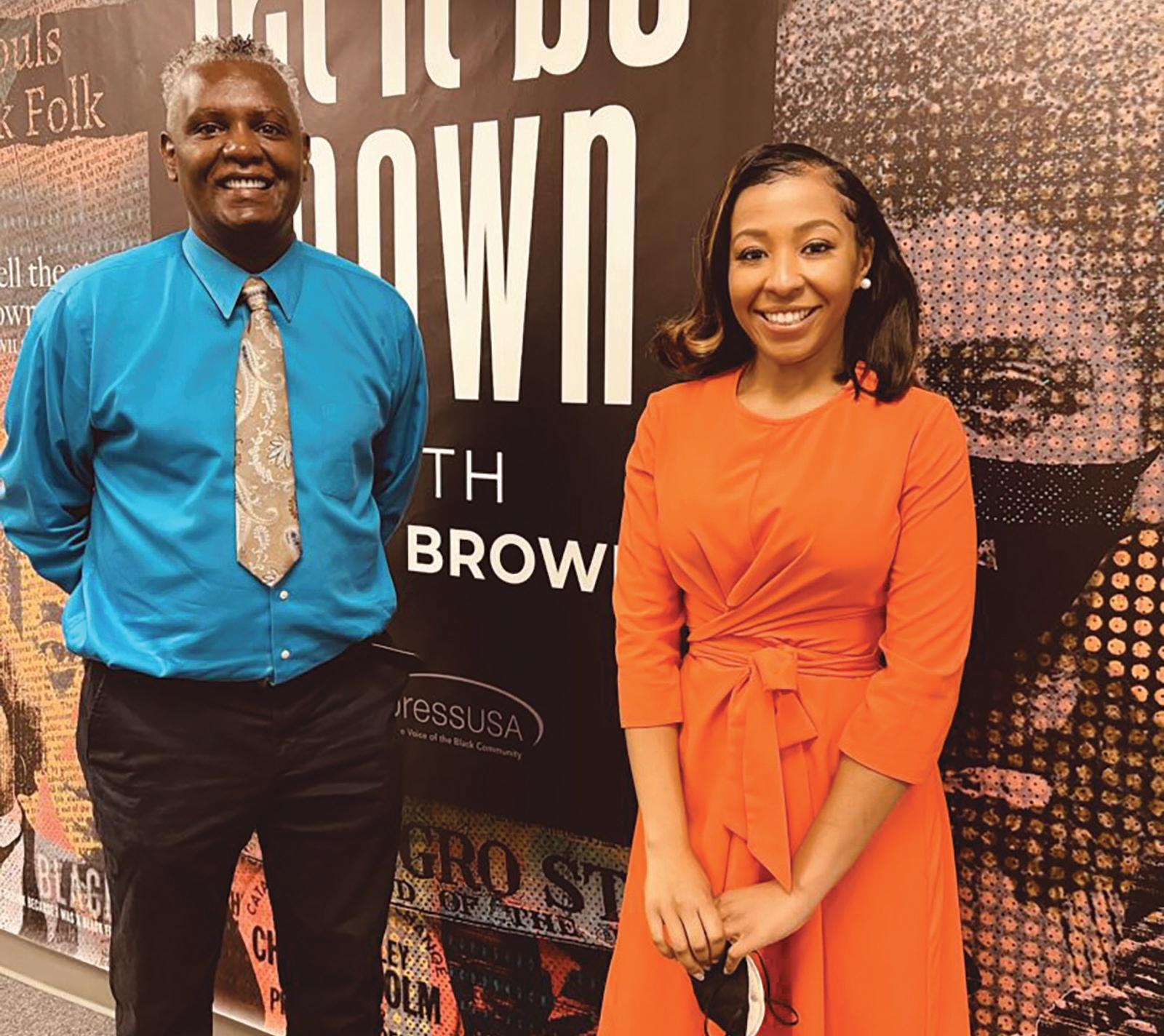
After becoming the first president twice impeached, making history with four indictments in four states, and being the man who once brashly stated he could grab women by their private parts but only later to be found liable by a civil jury for sexual assault, former President Donald Trump completed another humiliating first for excommanders-in-chief.
Not long after 7:30 p.m. EST., on Thursday, Aug. 24, 2023, Trump was booked into Fulton County Jail in Georgia. Inside the lockup, Trump finally received the same treatment as most criminal defendants: his mugshot was taken, and the sheriff released the notorious photo a short time later. His previous three arrests – in New York, Florida,
and Washington – spared him of the usual perp walk of shame, a jail visit, and an eagerly anticipated indignity of a mugshot.
However, once in Atlanta, authorities processed Trump and eventually released him from Fulton County Jail, but not before he was assigned the inmate number P01135809.
He joined his 18 other co-conspirators to have surrendered in the racketeering and election interference case launched by Fulton County District Attorney Fani Willis.
Mark Meadows, former White House Chief of Staff, Rudy Giuliani, Jenna Ellis, John Eastman, and Sidney Powell, who were all attorneys for Trump, now have publicly available mugshots.
Trump shared his mug shot on X, previously known as Twitter.
The post sent viewers to his 2024 campaign website, where he used the mugshot for a fundraising campaign.
The booking process was reportedly expedited, lasting approximately 30 minutes, as Trump’s legal team and prosecutors had earlier agreed upon a $200,000 bond. Part of the stipulated conditions prohibits Trump from intimidating co-defendants, witnesses, or alleged victims through any means, including social media.
The charges against Trump and the others include attempting to overturn his 2020 presidential election loss to Joe Biden in Georgia.
“You should be able to challenge an election,” Trump told supporters and journalists outside the Atlanta jail.
“I thought the election was a rigged election, a stolen election, and I should have every right to do that.”
White House Black Press Champion Erica Loewe Takes on New Leadership Role in Biden-Harris Administration
By Stacy M. BrownNNPA Newswire Senior National Correspondent
Erica P. Loewe, a trusted member of the Biden-Harris administration who has championed the Black Press and opened doors for many at the White House, is moving to a new role at 1600 Pennsylvania Avenue.
Loewe, who managed the White House’s media and communications as Director of African American media, confirmed to theGRIO’s April Ryan that she’ll now take on the role as special assistant to the president and chief of staff for the White House Office of Public Engagement.
Loewe becomes the latest Black woman to hold a senior position in the administration.
“I didn’t necessarily come from a life of privilege,” Loewe told Ryan. “I grew up in Liberty City, Florida, where the media income is around $30,000.”
She told Ryan that her typical day is filled with countless planned and unplanned projects. “You go to sleep reading the news, and you wake up reading the news,” Loewe stated.
Ryan noted that Loewe’s rise through the ranks of Washington, D.C., politics stands as a testament to her sheer determination and navigation of the political landscape without relying on any special privileges or connections.
Her initial foray into politics took shape as a White House intern, a role that laid the foundation for her subsequent ascent.
Before her tenure at the Biden-Harris White House, Loewe served as the deputy communications director for former House Majority Whip Jim Clyburn, representing South Carolina.
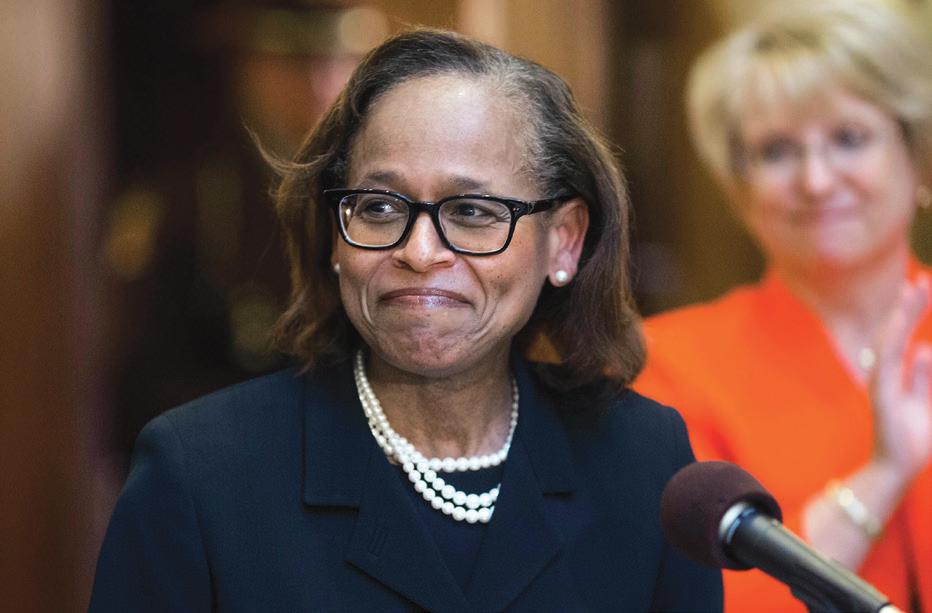
Her involvement extended to the tumultuous events of January 6, 2021, when Loewe, along with fellow colleagues, found themselves barricading doors in the face of pro-Donald Trump insurrectionists during the attack on the U.S. Capitol.
Loewe’s dedication and commitment to her work are evident in her relentless schedule, where the boundaries between professional and personal life often blur.
Her role as a public servant is deeply rooted in her passion for advancing the interests of Black Americans, ensuring their connection to the highest echelons of power in what’s famously known as “The People’s House.”
Drawing from her own experiences, she understands the rarity of individuals from her background reaching the White House and occupying spaces that have historically been exclusive.
Loewe’s intimate understanding of Black America makes her uniquely positioned to address issues that concern these communities.
Bakersfield
News Observer
Adjudicated a Newspaper of General Circulation August 11, 1980, Kern County Superior Court Decree, Case No. 16964, Government Code 6023.
Bulk Mailing Permit 724 Bakersfield, CA 93385
Published By Observer Group Newspapers of Southern California, Inc. Corporate Office 1219 20th St. Bakersfield, CA 93301 (661) 324-9466.
Member of The National Newspapers Publishers Association, Associated Press, and The Better Business Bureau
President: Ellen Coley
CEO: Jon Coley
Publisher/ Editor: James Luckey Jr.
Operations Manager: James Luckey
Credo-The Black Press believes that America can best lead the world away from racial and national antagonisms when it accounts to every person, regardless of race, color, or creed full human and legal rights. Hating no person, fearing no person, the Black Press strives to help every person in the firm belief that all are hurt as long as any one is held back.
The Observer Group Newspapers reserves the right to publish views an opinions that may not necessarily reflect those of the staff and management and are solely the product of the responsible individuals who submit commentaries published in these newspapers. Letters, articles and comments appearing in the Observer Newspapers reflect the opinions of the contributor and do not constitute the opinion or endorsement by The Observer Newspapers or its staff. The Observer Group Newspapers assumes no responsibility for photographs, articles, letters, press releases and unsolicited materials. Decisions as to the editing and publishing of materials are at the discretion of the Publisher and Editors. All rights are reserved on materials accepted for publication unless otherwise specified.
Bakersfield News Observer
The Valley’s News Observer
The Valley’s News Observer
1219 20th St. Bakersfield, Ca 93301 Mailing
Address P.O. Box 2341 Bakersfield, CA 93303 Phone (661) 324-9466 Fax (661) 324-9472
Emails and general info: observernews@gmail. com, Advertising: observeradvertising@gmail. com Available online: www.ognsc.com
“A lot of the people that I grew up with don’t end up in the White House and are not expected to end up in rooms that I have been blessed to end up in,” Loewe acknowledged in her interview with Ryan.
Anita Dunn, assistant to the president and senior advisor to Biden, commended Loewe for her pivotal role in spearheading Black media engagement since the early days of the administration.
“She’s smart, innovative, hard-working and has a passion that aligns with the President’s mission of ensuring everyone has a seat at the table,” Dunn said in a statement provided to Ryan.
She added, “I’m confident she’ll be a tremendous asset to the Public Engagement team as the President and Vice President continue working on behalf of communities across the country.”
Minnesota Supreme Court Justice Natalie Hudson Becomes First Person of Color to Lead State Judiciary
By Stacy M. BrownNNPA
Newswire Senior National Correspondent
Governor Tim Walz has announced that Justice Natalie Hudson is the new chief justice in Minnesota.
The moves makes Hudson the first person of color to lead the state’s judiciary.
Governor Walz praised Hudson’s leadership qualities, ability to build consensus, and unwavering commitment, emphasizing that she would uphold the court’s independence.
“I have no doubt that she will excel in this role,” Walz affirmed to the Minneapolis Star Tribune newspaper.
Lieutenant Gov. Peggy Flanagan also emphasized the importance of Hudson’s appointment due to the gender and racial imbalance in the state’s judiciary leadership.
Only two of the 21 previous chief justices were women, and none represented a person of color.
Flanagan told the Star Tribune that she’s urging all Minnesotans to celebrate the milestone, recognizing it as a step towards a more inclusive and representative justice system. To fill the vacancy created by Hudson’s elevation, Walz introduced Karl Procaccini, his former general counsel, as the newest addition to the seven-member court.
Hudson, 66, will replace Chief Justice Lorie Gildea.
Hudson said she was surprised by Gildea’s retirement and took time to consider the move before deciding to succeed her.
She described the opportunity as a “once-in-a-lifetime” chance.
As chief justice, Hudson will lead Minnesota’s highest court and oversee the judicial branch’s operations across 87 counties and the appellate courts.
Notably, following a recent state Supreme Court decision earlier in the year, she will supervise the
introduction of cameras into courtrooms.
Hudson’s distinguished career encompasses public and private practice and academia.
In a notable 2018 majority opinion, she allowed a school segregation case to proceed.
During her swearing-in to the high court in 2015, Hudson emphasized the importance of the judicial system’s treatment of marginalized individuals.
Hudson’s extensive experience includes a 13-year tenure on the state Court of Appeals, where she authored over 1,000 opinions.
Peter Knapp, a professor at Mitchell Hamline School of Law, hailed Hudson’s appointment as a significant positive development for the court and the state.
Knapp praised Hudson’s fair and ethical approach to the law, saying he believes in her ability to handle internal court affairs and interactions with other government
branches.
He also praised her skill in achieving consensus, citing a prior decision involving a complex family tragedy. With her steady influence, Hudson is expected to provide continuity during the transition as newer justices join the court.
Hudson’s academic background includes graduation from Arizona State University and a law degree from the University of Minnesota.
She has held positions in various legal spheres, from criminal appellate work to civil litigation, and even served as the St. Paul city attorney.
Having won statewide elections multiple times, Hudson will reach the mandatory retirement age of 70 in January 2027.
“The appointment of Justice Natalie Hudson to lead the Minnesota Supreme Court—the first person of color to hold this highest of positions—is a powerful testament to our commitment to justice for all. Her selection as the next chief justice embodies the spirit of progress,” St. Paul Mayor Melvin Carter wrote on X, the platform formerly known as Twitter.
“From her time as Saint Paul City Attorney through her tenure as Supreme Court associate judge, Justice Hudson has shown dedication to integrity and upholding the principles of our legal system. She is a proven public servant who will undoubtedly leave a lasting legacy.”Mayor Melvin Carter wrote on X, the platform formerly known as Twitter. “From her time as Saint Paul City Attorney through her tenure as Supreme Court associate judge, Justice Hudson has shown dedication to integrity and upholding the principles of our legal system. She is a proven public servant who will undoubtedly leave a lasting legacy.”
Kerry Washington, Martin Sheen Shout for Solidarity Between Hollywood Strikers and Other Workers
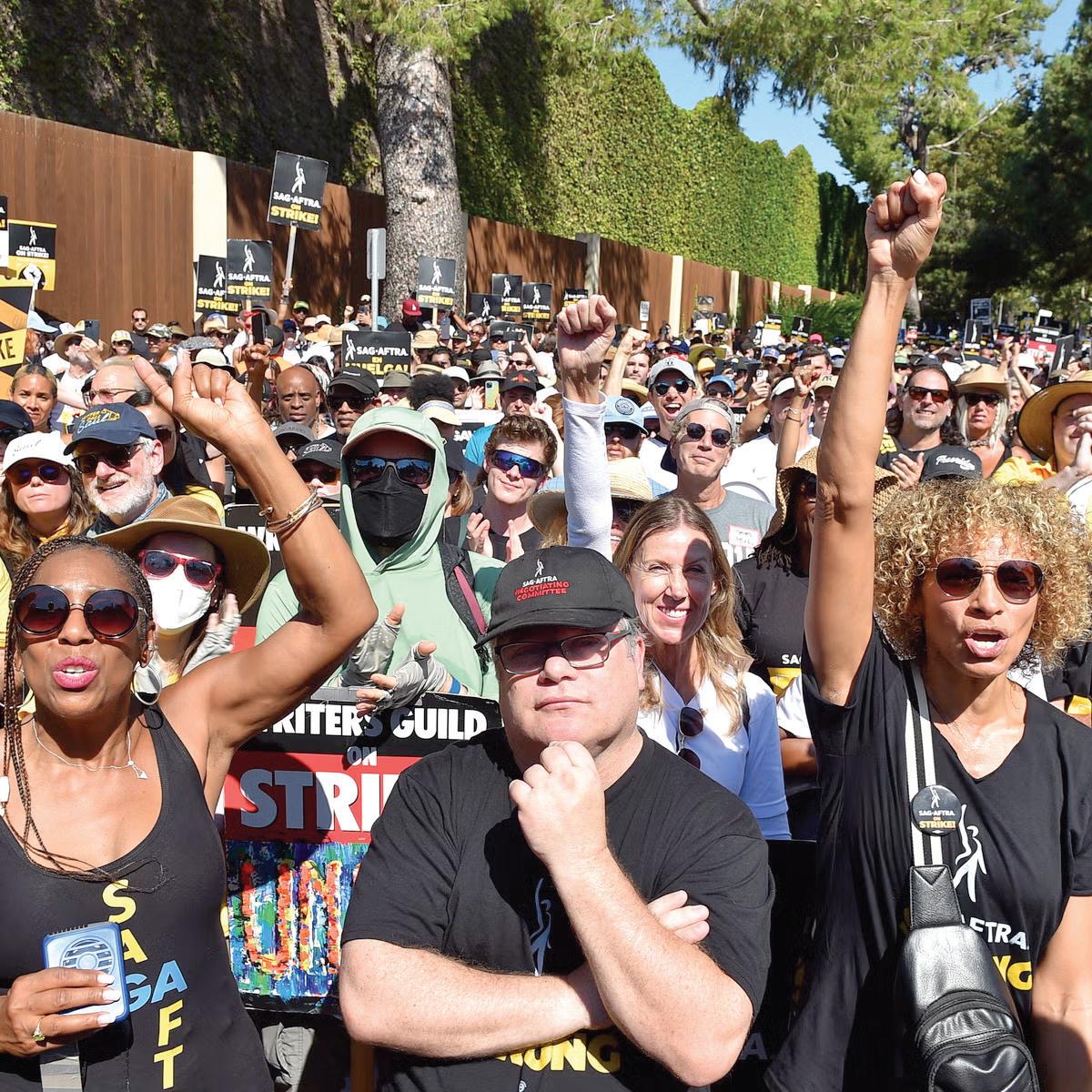
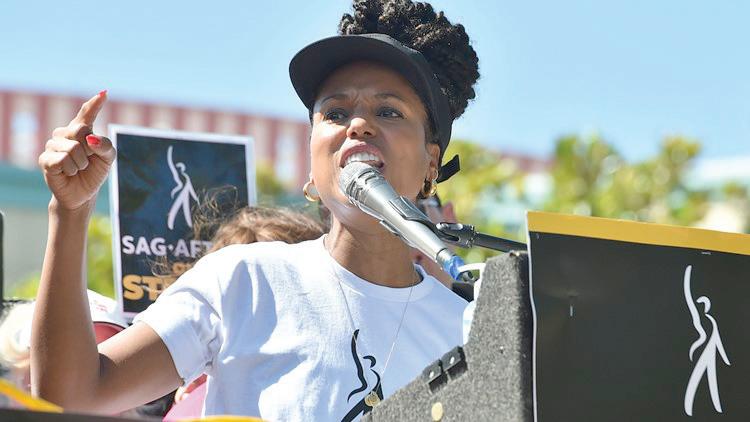 By ANDREW DALTON
By ANDREW DALTON
AP Entertainment Writer
LOS ANGELES (AP) –– Kerry Washington and Martin Sheen, a pair of fictional former politicos, turned Hollywood`s strikes into a rousing campaign rally Tuesday with speeches celebrating unity across the industry and with labor at large.
"We are here because we know that unions matter," said Washington, who played a political fixer on ABC's "Scandal." "Not only do we have solidarity within our union, we have solidarity between our unions, because we are workers."
The rally outside Disney Studios in Burbank, California, coming more than a month into a strike by Hollywood actors and more than three months into a strike by screenwriters, was meant to highlight their alliance with the industry`s other guilds and the nation`s other unions, including the Teamsters and the AFL- CIO.

"The audacity of these studios to say they can't afford to pay their workers after they make billions in profits is utterly ridiculous," Los Angeles County Federation of Labor President Yvonne Wheeler told the crowd. She added a dig at Disney`s CEO, who has become a target of strikers. ``But despite their money, they can't buy this kind of solidarity. Tell Bob Iger that."
Sheen, who played the president for seven seasons on "The West Wing," was joined by most of the show`s main cast members on the stage as he emphasized that the toll being taken as the strikes stretch out.
"Clearly this union has found something worth fighting for, and it is very costly," Sheen said. "If this were not so we would be left to question its value. "
Washington also sought to highlight that high-profile guild members like her were once actors who struggled to find work and make a living, as the vast majority of members still are. She ran through the issues at the heart of both strikes, including compensation and studios and streaming services using artificial intelligence in place of actors and writers.
"We deserve to be able to be paid a fair wage. We deserve to have access to healthcare. We deserve to be free from machines pretending to be us,`` Washington said. "The dream of being working artist, the dream of making a living doing what we want to do, should not be impossible."
The alliance of studios, streaming services and production companies that are the opposition in the strikes says it offered fair contracts to both unions before
talks broke off that included unprecedented updates in pay and protections against AI. Talks have restarted between the studios and writers,
who went on strike May 2, though progress has been slow. There have been no negotiations with actors since they went on strike July 14.
Movies and TV Shows Affected by Hollywood Actors and Screenwriters` Strikes
By The Associated Press
Hollywood productions and promotional tours around the world have been put on indefinite hold as actors join writers on the picket lines as they seek new contracts with studios and streaming services.
On Thursday, Warner Bros. reshuffled several films, notably moving "Dune 2" from November to March 2024. The studio also shifted the release date of a "Lord of the Rings" movie that will now arrive in theaters in December 2024.
Here's a selected look at shows and films in suspension.
SHOWS THAT HAVE PAUSED WORK DURING
WRITERS STRIKE
"1923" –– Paramount+
"A Knight of the Seven Kingdoms: The Hedge Knight"
–– HBO
"Abbott Elementary" –– ABC
"American Dad" –– Fox
"American Horror Story" –– FX
"Big Mouth" –– Netflix
"Billions" –– Showtime
"The Chi" –– Showtime
"Cobra Kai" –– Netflix
"Daredevil: Born Again" –– Disney+
"Duster" –– Max
"Emily in Paris" –– Netflix
"Family Guy" –– Fox
"FBI: Most Wanted" –– CBS
"Grey's Anatomy" –– ABC
"Hacks" –– Max
"The Last of Us" –– HBO
"Law & Order" –– NBC
"Metropolis" –– Apple TV+
"Penguin" –– Max
"Severance" –– Apple TV+
"The Sex Lives of College Girls" –– Max
"Stranger Things" –– Netflix
"The Summer I Turned Pretty" –– Prime Video
"Yellowjackets" –– Showtime
MOVIES IN (VARIOUS STAGES) OF
PRODUCTION THAT SHUT DOWN
"Deadpool 3" –– Disney/Marvel
(originally set for May 3, 2024)
"Mission: Impossible –– Dead Reckoning Part II" ––
Paramount (originally set for June 28, 2024)
"Beetlejuice 2" –– Warner Bros
(originally set for Sept. 6, 2024)
"Gladiator 2" –– Paramount (originally set for Nov. 24, 2024)
"Wicked" –– Universal
(originally set for Nov. 27, 2024)
Untitled Karate Kid film –– Sony
(now Dec. 13, 2024)
"Blade" –– Disney
(now Feb. 14, 2025)
"G20" –– (TBD)
"Lilo & Stitch" –– Disney (TBD)
"Mortal Kombat 2"–– Warner Bros. (TBD)
"Spider-Man: Beyond the Spider-Verse" –– Sony (TBD)
Untitled Brad Pitt F1 Film –– Apple (TBD)
"Venom 3" –– Sony (TBD)
MOVIES DELAYING RELEASES
"Challengers" _ MGM/Amazon
(now April 26, 2024)
"Dune: Part Two"- Warner Bros.
(now March 15, 2024)
"Ghostbusters: Afterlife" _ Sony
(now March 29, 2024)
"Godzilla x Kong: The New Empire" – Warner Bros. (now April 12, 2024)
"Kraven the Hunter" _ Sony (now Aug. 30, 2024)
"The Lord of the Rings: The War of the Rohirrim" –Warner Bros (now Dec. 13, 2024)
"Poor Things" –– Searchlight Pictures (now Dec. 8)
"Problemista" –– A24 (TBD)
"They Listen" –– Sony (TBD)
Untitled Dirty Dancing Sequel – Lionsgate (now 2025)
"White Bird" _ Lionsgate (now Winter 2023)
SHOWS THAT HAVE CANCELED EPISODES
DURING WRITERS STRIKE
"Jimmy Kimmel Live" –– ABC
"Last Week Tonight With John Oliver" –– HBO
"Late Night With Seth Myers" –– NBC
"The Late Show With Stephen Colbert" –– CBS
"Saturday Night Live" –– NBC
"The Tonight Show Starring Jimmy Fallon" –– NBC
Rare Super Blue Moon Illuminates August’s Night Sky
By Stacy M. Brown NNPA Newswire Senior National CorrespondentAs August draws to a close, sky gazers are in for a celestial treat as a rare super blue moon graces the heavens. This month has already delighted stargazers with a supermoon at its outset, but the celestial show is still ongoing. On August 30, the second full supermoon of the month will shine, and it holds the distinction of being a blue moon despite its lack of a blue hue. In astronomical terms, a blue moon refers to the occurrence of a second full moon within a single calendar month.
The lunar spectacle started with the first full moon of August, which appeared on August 1 and marked the second installment in a series of four consecutive supermoons. Experts said these natural phenomena stand out by shining approximately 16% brighter than an average full moon while appearing more prominent in the night sky. To put it in perspective, NASA equates the difference in apparent size to that between a quarter and a nickel. Supermoons occur when the moon’s elliptical orbit brings it closest to Earth, precisely when it’s fully illuminated.
When the supermoon graces the night of August 30, it will seem even closer and larger than its lunar counterpart from the beginning of the month. As the grand finale of this

year’s consecutive supermoons, the “Harvest Moon” will rise on September 28. Those who miss the upcoming blue moon must exercise patience, as blue moons are a rarity, accounting for just 3% of full moons. In contrast, about a quarter of all full moons are supermoons. The subsequent opportunity to witness a blue moon will present in May 2026. However, astronomy enthusiasts can anticipate an extraordinary occurrence in 2037, with super blue moons set to grace the skies in January and March.
The pivotal moment of this Wednesday’s super blue moon is set to occur at 9:36 p.m. EDT. Stargazers who peer upwards may also catch a glimpse of Saturn near the moon around 8:42 p.m. EDT. As the night unfolds, Saturn will appear to traverse the moon’s vicinity clockwise—an event worth witnessing. Although Saturn is observable by simply looking upwards, using binoculars or a telescope can unveil the planet’s distinctive features with greater clarity.
Having recently reached opposition with the sun on a Saturday night, Saturn will remain in this position until Sunday night. This alignment, coupled with the sun’s illumination, will lend the ringed planet an appearance of increased size and brilliance in the night sky, as detailed by NASA. The opportunity to marvel at Saturn’s splendor will persist until February of the coming year.
On
Black Veterans and Inaccessibility to Mental Health Resources
Despite taking the same risk of death and costly sacrifice to their mental well-being, Black Veterans continue to suffer as mental health services are statistically less accessible for the demographic than their white counterparts.
Institutional racism continues to persist through channels of assistance for Black Veterans as the Department of Veterans Affairs has acknowledged that discrimination has likely played a major role in major discrepancies in assistance.
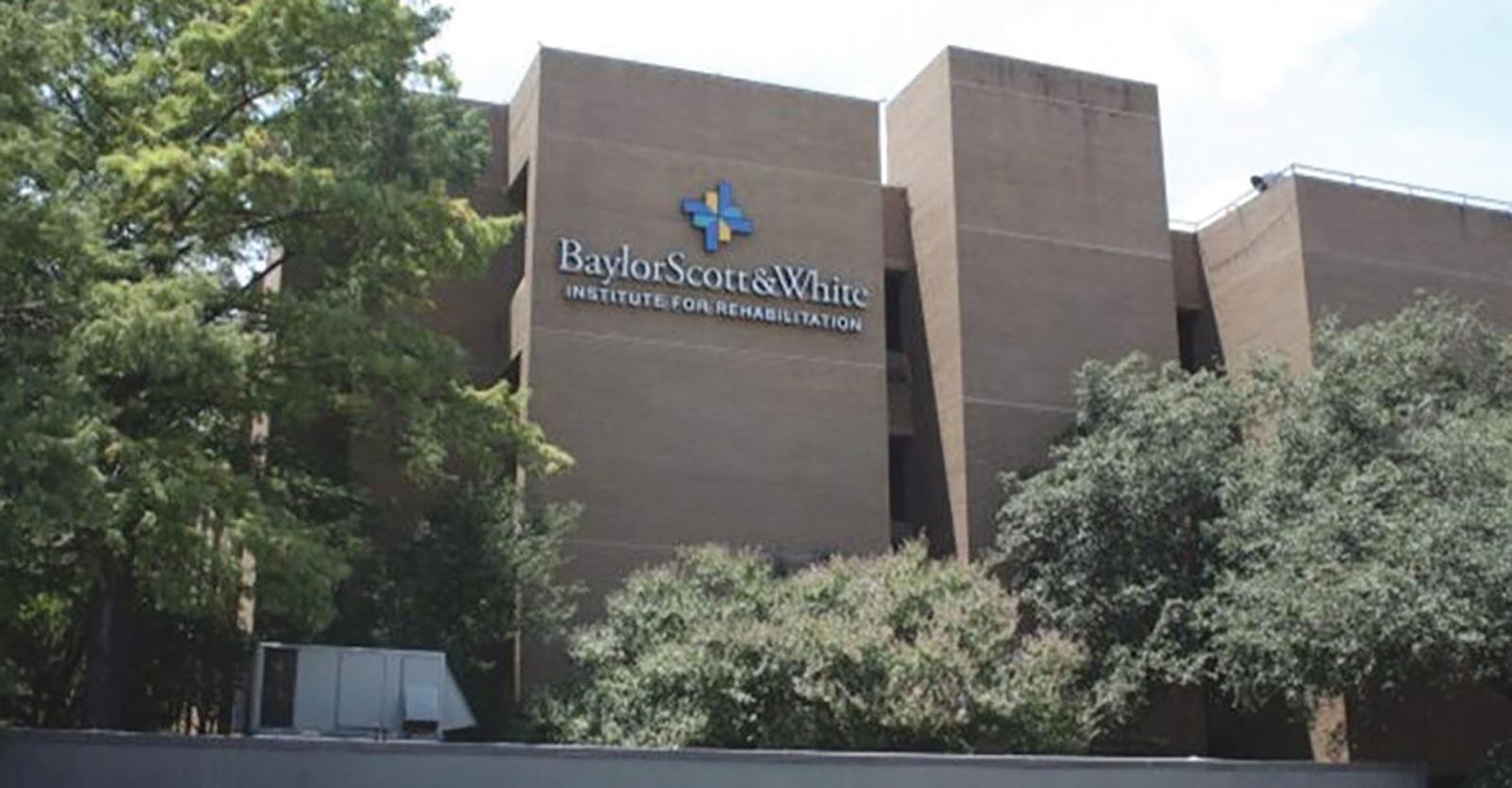
“We recognize that in the past there has been institutional discrimination that may have played a role in the adjudication of benefits,” VA press secretary Terrence Hayes told Axios News last month following an announcement that the department has taken on an initiative to address disparities.
Documents released through an open records request filed earlier this year by Black Veterans Project in Baltimore showed proof of racial discrimination in the accessibility of mental health/disability benefits offered to Veterans.
Data retrieved from the fiscal year of 2023 showed that 15.52% of all Black Veterans who applied for physical or mental health benefits were denied assistance by the VA, compared to 10.6% of white Veterans. This is consistent with reports from 2017, showing that Black Veterans seeking disability benefits for PTSD were denied 57% of the time, compared to a 43% rate of denial for white counterparts.
From 2017 to 2023, white Veterans enjoyed a consistently higher grant rate than Black Veterans every year. Despite seeking and applying for services at a higher rate (43% compared to 31.7% for white Veterans), Black Veterans have received significantly less assistance than whites. Even among those receiving services, Black Veterans often have worse outcomes, according to a study featured in Psychiatric Services, Volume 73 in 2022.
Of the 2,870 Veterans treated nationally in VA Posttraumatic Stress Disorder Residential Rehabilitation Treatment Programs in fiscal year 2017, Black Veterans receiving services from the VA experienced a higher rate of depression symptom recurrence 4 months after discharge compared to white Veterans. While services were proven to improve conditions across demographics, Black Veterans
still experienced markedly poorer outcomes.
The effects of these institutional failures are apparent and run deep, contributing to the framework of larger social issues with devastating repercussions. According to a study by the National Center on Homelessness Among Veterans, Black Veterans are substantially prevalent in the homeless population compared to other Veterans, comprising 39% of the total homeless veteran population despite making up only 11% of the total veteran population. Outcomes in PTSD and depression are typically worse, and likewise, Black Veterans are more likely to fall into alcoholism even with similar levels of consumption to their white counterparts, according to the American Journal of Psychiatry. Additionally, a study conducted by the nonprofit research group Rand Corp. showed there were 1.76 suicide
attempts among Black troops for each by a white service member. As services falter, so does the quality of life for Black Veterans compared to white former service members, resulting in higher documented rates of homelessness, alcohol use disorder, and suicide. Texas is home to over 1.6 million Veterans, with onefourth of all Veterans statewide residing in the DFW area. Dallas previously made the news in 2016 when on July 7, Black veteran Micah Xavier Johnson killed five officers and wounded seven others before being slain in a stand-off with police Downtown. Reflecting disillusionment, pain, and a documented resentment of a deeply flawed system exacerbated by increasing violence against Black Americans by law enforcement, the incident illustrated the result of the systemic failures of the Department of Veterans Affairs as
much as it did the institutional racism present throughout American life.
As an Army Reserve Afghan War veteran, Johnson showed warning signs of potential violence prior to the calculated attack on white law enforcement. He was previously recommended for mental health counseling by a fellow soldier who accused him of sexual harassment. Stating that they were platonic friends of over four years, she recalled an event when Johnson punched out a car window during an outburst, severing an artery and requiring medical treatment.
Following an inspection, Johnson was deemed a threat to others and disarmed by his commanding officer. After a period of high stress and ostracization, Johnson was mistakenly honorably discharged according to the Army and never was provided counseling. This and other details were released following his death.
Other Veterans, such as Paul, 72, a former Army sergeant living in South Dallas that served in the Vietnam War, have suffered lifelong cases of PTSD while continuing to work and seek out services from the VA.
“I still have nightmares from what we did,” Paul says, explaining that insomnia brought on by PTSD has left him sleepless most nights.
“When I go in to get help, I have to stand in line behind a hundred other people. They expect you to smile and be polite. I fought for this country. I bled for this country,” Paul says. “All of my guys came back. Nobody was dead, nobody with one leg or one arm, everybody came back. And all they did was whatever I told them to.”
Suffering night terrors, high anxiety, and depression, Paul recently secured compensation for false denials of repeated disability claims. “I sued their asses and won,” Paul says. “And the money’s great but look at how long it took. Forty years for me to get what I should’ve already got. I’m over 70 years old. They already robbed me.”
Almost 80 years after the GI Bill was rendered largely inaccessible for Black Veterans, the group continues to suffer due to institutional patterns of discrimination. As the demographic receives lesser treatment than white former service members, the figurative cracks in our society turn to fissures as they become more firmly integrated within our institutions. Despite the VA’s promise to right institutional wrongs, lasting effects have left the lives of Black Veterans at greater risk of debasement.
What Are Schoolteachers Thinking? Report Gives Insights
Antonio RayHarvey California Black Med
What teachers think and experience in the public education system is explored in a new report by the National Alliance for Public Charter Schools (NAPCS).
The report, named “Listen to Your Teacher: An Analysis of Teacher Sentiment on the State of Public Education,” was authored by NAPCS’s Vice President of Communications and Marketing, Debbie Veney.
The Harris Poll, a market research and consulting firm, carried out the survey of over 1,200 public schoolteachers from both charter and district schools for the report.
“I think the results of The Harris Poll raises the important point that teacher voice is critical in determining the challenges we face in education, particularly in the aftermath of the pandemic,” said Leona Matthews, Senior Director of Literacy Programs for Green Dot Public Schools California.
Green Dot Public Schools is a non-profit organization whose mission is to help transform public education so all
students graduate prepared for college, leadership and life. The U.S. Department of Education has featured Green Dot as a national leader in school turnarounds.
“It makes it clear that charter schools provide the kind of small school, values driven environment that empowers teachers to meet the diverse needs of the students we serve.”
The NAPCS commissioned the survey to gain more insight into the teachers’ experiences, opinions and motivations for entering, staying in, or leaving the profession.
The research was conducted online from May 10 to May 30, 2023.
“Next to parents, teachers are the backbone of education. It is valuable to have insight into how they feel in today’s climate and find out how we can better support their heroic work in and outside the classroom. Although we certainly have a special interest in charter schoolteachers, we care deeply about the experience of all public schoolteachers,” stated Nina Rees, President and CEO of the NAPCS.
Based on the study, 10 Los Angeles-based Green Dot Public Schools helped students increase proficiency rates in both math and English during the 2022-2023 year. Four schools exceeded their pre-pandemic proficiency rates.
Charter schools are publicly funded independent schools established by teachers, parents, or community groups under the terms of a charter with a local or national authority.
They are governed under a legislative contract –a charter – with the state, school district, or another entity, according to the National Center for Education Statistics (NCES), a statistical agency of the U.S. Department of Education (USDE).
In April 2020, the NCES and Institute of Education Sciences released a 71-page report that Black educators were 11% of the teachers in the country’s charter schools

during the 2017-2018 academic year.
Overall, Black educators make up 11% percent of the teachers in city schools but only 5.5% of the teachers in suburban schools and 3.6 percent in rural schools. The nation’s average of Black educators in the classroom is 6.3%, according to the report.
Veney, participated in a podcast focused on the study. She said that the importance of the survey was to get the 1,211 teachers to provide their perspectives (811 school district teachers and 400 charter school educators).
“This is the most important topic right now facing public education. We’re hearing all the headlines about teacher shortages, teacher resignations, and teacher dissatisfaction,” Veney said. “It really felt like we were not listening enough to what teachers were actually saying about this (or) if there was a lot of talk about teachers but not enough talk to teachers.”
The key data from the survey indicate the following trends:
Teachers Agree Families and Students Should Have Education Choice – About 4 out of 5 teachers agree that regardless of its politicized nature, public school choice is important for both families and teachers (79% of all public schoolteachers; 87% of charter schoolteachers and 78% of district schoolteachers).
Something Has to Change – Public school teachers cite student behavior and discipline issues (74%) as the top challenge they believe teachers currently face, followed by pay (65%.).
There’s Something Special About the Experience of Charter Schoolteachers – Eighty percent of charter schoolteachers say they are as or more motivated than when they initially entered the profession (vs. 34% among district teachers).
Aligning with Culture — Ninety-six percent of charter schoolteachers report feeling aligned with their
current school’s culture in terms of values and beliefs about education. Only 75% of district schoolteachers feel this way.
Keep Politics Out of the Classroom – Teachers say they just want to teach (94%) and report feeling like they are caught in the crossfire of a culture war (91%).
“It amplifies a needed conversation about our educational system, how we can best support teachers, and ultimately our students.” Matthews said of the report.
Charter schools historically serve proportionately more students of color and more students from low-income communities than district schools. For a stretch of 16 years (2005-06 to 2020-21 school years), charter schools have consistently had a higher portion of students of color compared to district schools, according to the National Alliance for Public Charter Schools (NAPCS).
During the 2005-2006 school year, a total of 196,851 students were enrolled in California charter schools, according to data provided by NAPCS. The movement continued each year as enrollment reached 692,783 pupils by the end of the 2020-2021 calendar year.
As of the beginning of the 2022–23 school year, more than 1,300 charter schools and seven all-charter districts are operating in California, according to the California Department of Education (CDE).
San Bernardino County has 52 charter schools, 275 in Los Angeles County has 275, 124 in San Diego County, 56 in Sacramento County, 80 in Alameda County, and 16 public charter schools in San Francisco County, according to CDE.
“I am really delighted to say that a lot of what we found is consistent and similar across both types of school settings,” said Veney referring to the charter schools and district schools.
Aging Californians: Relaxing the State’s Public Meeting Law Is a Good Thing
Manny Otiko
California Black Media
During the COVID-19 pandemic, Gov. Gavin Newsom issued an executive order that temporarily suspended some of the requirements of the California’s public meeting law, the Bagley Keene Act.
Newsom’s executive order allowed elected boards, commissions and other state “bodies” to hold remote meetings via teleconference without posting each official’s teleconference location (which in some cases were private homes); posting agendas at each location; or making those locations accessible to the public, as required by law.
A bill is currently being considered by the California legislature that would extend some of the changes to the Bagley-Keene Open Meeting Act until Jan. 1, 2026.
Senate Bill (SB) 544, which was amended Aug. 14 and is currently being reviewed by the Assembly Appropriations Committee, was introduced by Sen. John Laird (D-Santa Cruz) in February.
Supporters of the legislation argue that the bill saves taxpayer money by driving down the costs associated with in-person meetings by up to 90%, and that virtual meetings give access to vulnerable populations who may not be able to attend meetings in person.
One of those vulnerable populations is aging Californians.
“For many citizens, this was a way to stay active in the community,” says former Assemblymember Cheryl Brown, who is now the chair of the California Commission on Aging.
“Once we got them trained, they fall in love with it. They become engaged with their government,” said Brown.
“They want more communication, and they don’t want to be isolated,” Brown says referring to the changes SB 544 is proposing. She wants people to have permanent access to public meetings. During the pandemic, there was record participation in meetings because they were broadcast online, and people could access them by teleconference.
However, SB 544 has its share of opponents. Groups such as the First Amendment Coalition (FAC), the California Newspaper Publishers Association, California Common Cause, The Society of Professional Journalists, and other groups committed to holding government accountable have spoken out against the bill. They believe that if SB 544 passed, it would lead to more government secrecy and turn state government boards and commissions into “faceless bureaucracies.”
The FAC was one of several civic groups that cosigned a letter critical of SB 544.
“This rewriting would ensure that a state body would never again have to meet in person. This would fundamentally undermine one of the law’s key protections for public access and participation — the guarantee that the press and public can be physically present in the same room as those sitting on the dais and making decisions. Such physical presence has been a constant hallmark of democratic institutions,” according to the letter.
David Loy, legal director at the FAC, told California Black Media (CBM) he is concerned SB 544 would allow more online meetings and it would diminish elected officials’ face-to-face contact with their constituents.
He added that the governor’s executive orders about online meetings were established during the COVID pandemic – and that the health crisis is over.
According to Loy, elected officials decide public policy in these meetings. And he feels that needs to be done in-person.
“Public officials should be meeting face-to-face with the people they serve,” he said.
Sedalia Sanders, former mayor of El Centro who is currently active with her city’s local agency on aging and is active with the California Commission on Aging, disagrees with Loy. Sanders told CBM since many of the Commission’s meetings are held in Sacramento, she participates through video conferencing.
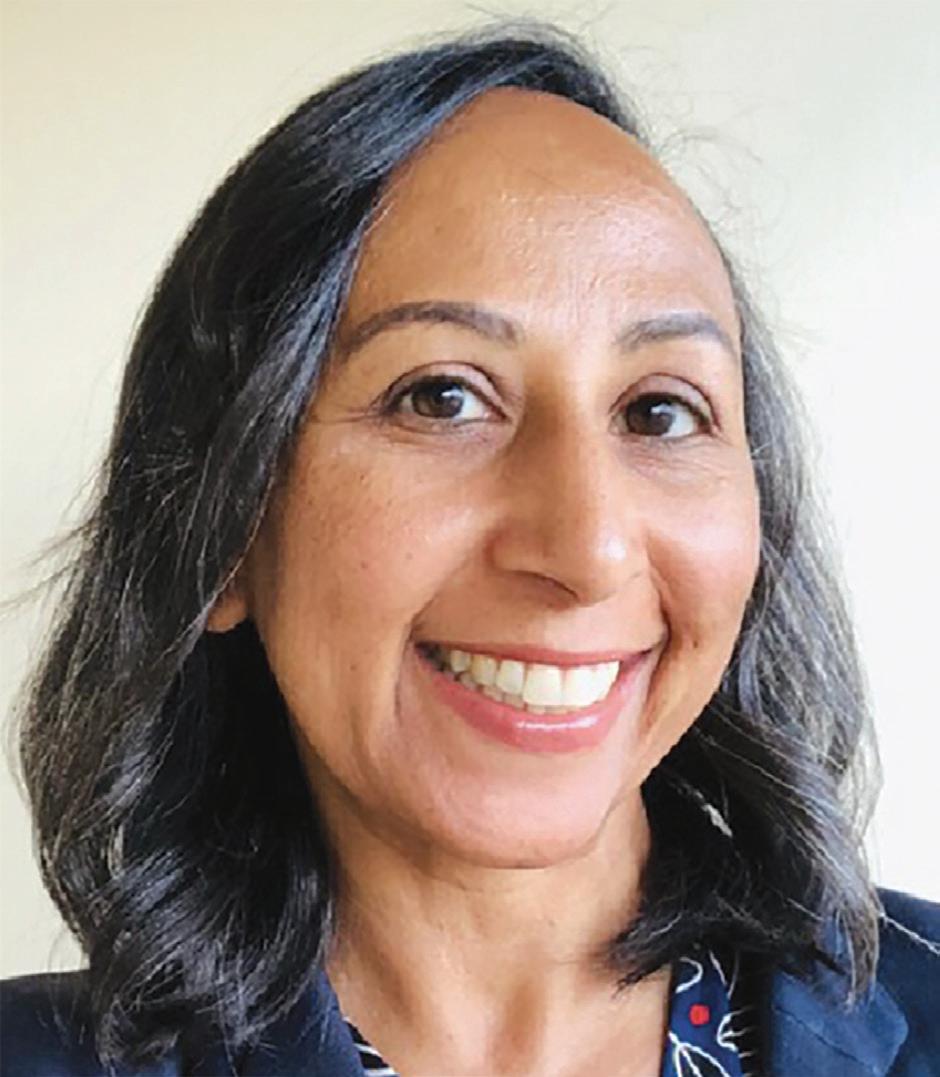
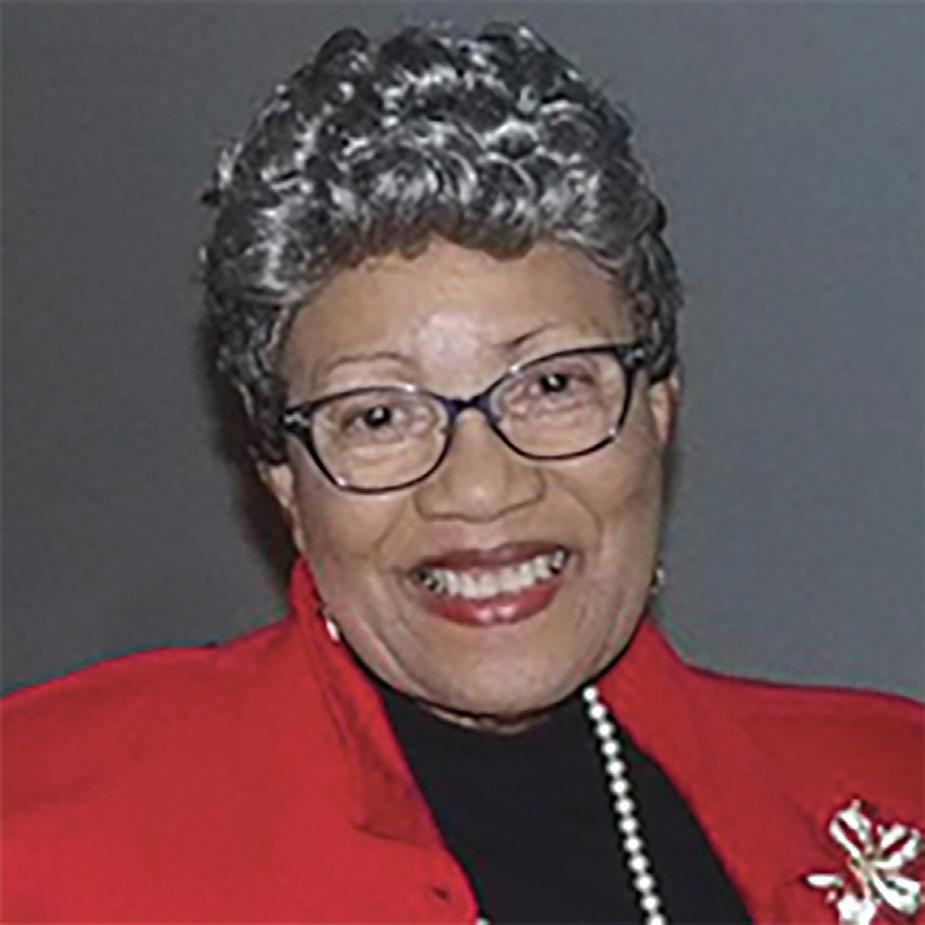
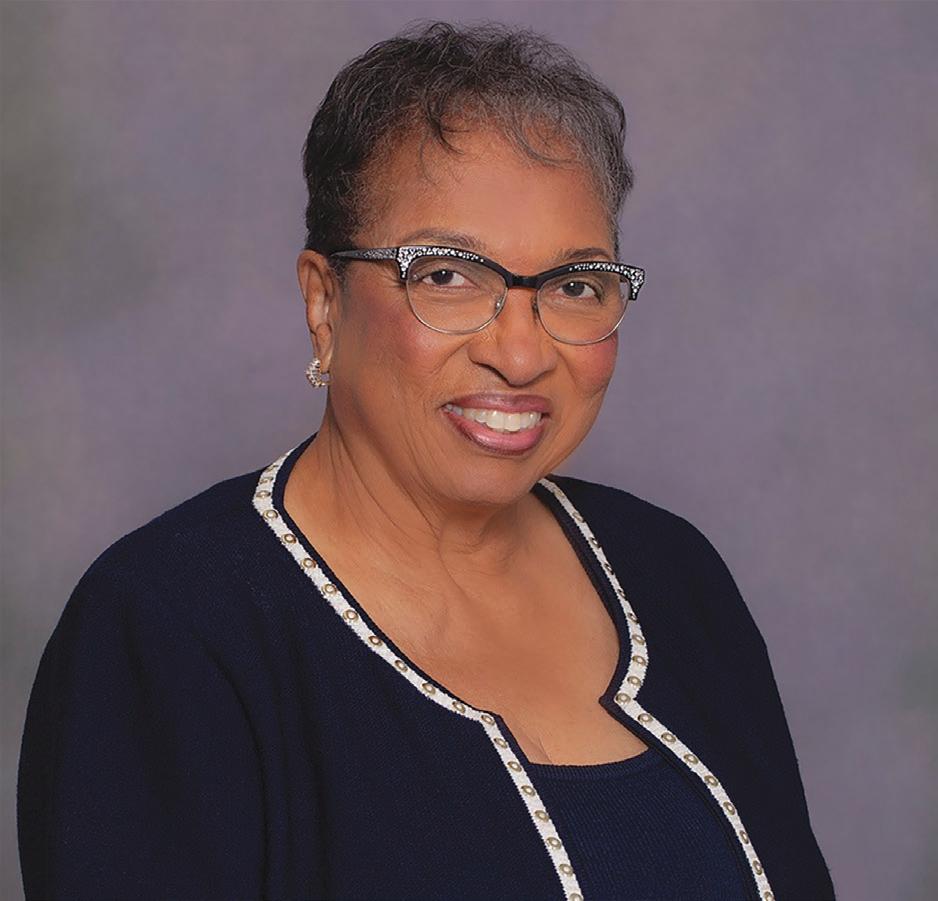
“I don’t think anything is lost,” she said.
Sanders says participants can still see and interact with their representatives through video cameras.
“For an elected official to participate in a meeting online, the majority of the board members still have to meet in person to form a quorum,” she added.
Although born during World War II, Sanders has embraced modern technology. She has a cell phone and navigates the Internet. However, she said that not all senior citizens are as tech savvy as she is. Many of them don’t know you have to pay for the
Internet. And this can be a problem, especially if you’re on a fixed income.
Brown says that the bill’s opponents are conflating the issues, boards, and commissions are different than elected leaders voting on public policy matters, and seniors and disabled communities support this bill because it’s about inclusion, not exclusion.
“Seniors don’t want to sit back and just play pickleball,” she said. “They want to have a say in the decisions that affect their lives and remote access allows them to do that.”
Special to California Black Media Partners
Black mothers are more likely to die due to complications from pregnancy and childbirth than pregnant women of all other races. This is a shameful injustice plaguing the Black community, one that is over 400 years in the making.
Black women are 1.6 times more likely to experience more maternal mental health conditions, including prenatal and postpartum anxiety and depression, than women of other races, according to the American Hospital Association Institute for Diversity and Health Equity, These injustices are killing Black women who are wellresourced and educated like Olympian Tori Bowie, as well as those enduring economic hardship. It is also harming their babies. And although this crisis has attracted national attention, it remains unaddressed.
For Black women, like me, who have experienced premature childbirth, the trauma and guilt of not being able to bring our babies full term can be long-lasting. Those psychological scars exist along with the other physical and mental threats to our health and wellbeing.
Both of my children were born three months early, despite my best efforts. I had a steady job, decent income, post-graduate education, a good bill of health and a stable relationship. Yet, my health and life were threatened in both of their births. One would think that such an experience would place me in a unique category. However, as a Black woman, it does not.
In Los Angeles County, Black women die at three to four times the rate of other races due to pregnancy-related complications, and Black babies die at two to three times the rate of any other race before their first birthday. Black babies are born premature at greater rates than any other ethnic group, which can lead to long-term health and developmental challenges. The Black community is also shouldering a disproportionate amount of the mental burden of tragedy and loss when it comes to pregnancy and childbirth.
To solve this problem, we must acknowledge three
truths:
The problem is not with Black people.
It’s the system that is failing Black people.
This problem is solvable, and Black people deserve to have joyous and healthy births.
The data coupled with our lived experiences and history as Black people tells us something is amiss. College educated Black women experience worse birth outcomes (i.e., death, premature birth, health complications for mother and child) than White women with high school diplomas. Black women who are non-smokers have worse birth outcomes than White women who smoke. The root problem is also not “teen pregnancy.” Black teens have better birth outcomes than older Black individuals.
The root causes of the problem are complex. In short, stress kills.
The stress of generations of racial harm compounded by ongoing, exposure to racist treatment, prejudice and oppression, can be deadly. This stress is especially deadly when it is exacerbated by systems of care that disrespect and withhold quality care from Black people. The social contexts that imperil Black individuals to a greater extent than other races, such as homelessness, criminal justice injustice, education system injustice, and child welfare system injustice create a perfect storm for these root causes to grow.
There is hope for change. There are a number of initiatives underway to address the racism and stress that are at the root of the problem. These initiatives range from legislation such as the Federal Momnibus Act, California Senate Bill (SB) 65 (California Momnibus Act) and California SB 464 (Dignity in Pregnancy Act) to Statewide Initiatives such as the Perinatal Equity Initiative. In Los Angeles County, the Department of Public Health’s African American Infant and Maternal Mortality Initiative (AAIMM) brings together public agencies, communitybased organizations, and advocates to raise awareness and transform how systems treat Black people.
But what can a Black woman/person do if they are
pregnant or want to become pregnant one day? We can reclaim justice and joy by activating a village to address the stress. Until racism, racial microaggressions and poor treatment by the health care system are resolved, mental health support from multiple places is a powerful tool we can access. This means building a village to provide social and emotional support, and as well as advocacy during your childbirth journey. Available resources include:
Black Infant Health Program -- prenatal groups that
Finding Joy and Justice for Childbearing Black Moms Support the Black Community Read the
bring together Black pregnant folks in a group setting. They offer support, resources, and a coach to help you through your journey.
Doulas – birth partners who provide emotional and physical support during pregnancy, childbirth, and the early postpartum period. Los Angeles County AAIMM Doula program provides doulas services by Black Doulas for Black families.
Group Prenatal – a small prenatal care group of pregnant women with similar due dates led by a clinician.
Home Visitation – assistance to expecting families on their journey through pregnancy and early parenting, delivered by a public health nurse or a parent coach.
Midwives, Maternity Homes and Birth Centers –Important sources of caring, quality support and advocacy.
While agencies and advocates are mounting efforts, we all have an important role. Even if you have no plans of becoming pregnant or parenting in the future, you can still make a difference when it comes to the mental health of childbearing moms.
If you know someone who is pregnant, connect them to a resource to assist them on their journeys. Be a friend and advocate. Take ACTION to show them they have a village --offer to cook/bring a meal, go with them to their appointments, provide a shoulder to lean on when they are exhausted.
While we work to make this world a less traumatizing place for Black people, we can also take steps to prevent the stress of that trauma from killing our mothers and our babies. We deserve to experience joy, abundance, and beautiful, healthy births. It is our birthright.
About the Author Dr. Melissa Franklin is the Director of maternal, Child and Adolescent Health at the Los Angeles County Department of Public Health.
Related Video Chelsea, an expectant mom, and Danica, her doula, discuss the delicate connection between mental health and maternal care. Watch the video.
News You Might Have Missed California Black Media Political Playback:
Joe W. Bowers Jr. and Edward HendersonCalifornia Black Media
Californians Living in Subsidized Housing May Get Hit with Unexpected Tax Bill
California lawmakers are scrambling to find ways to alleviate the housing crisis occurring in the state. Programs and subsidies are in constant development; however, under an obscure tax rule called possessory interest, individuals may be responsible for getting hit with an unexpected tax bill as a result.
In a move to aid the middle class, government agencies (known as joint power authorities) are buying luxury buildings and lowering rent for possible tenants. The discount is possible because these agencies do not need to pay property taxes. Instead of pocketing the extra cash, programs are being implemented to place middle income workers like police officers, teachers and construction workers in these buildings at a discounted rent price.
But, under the tax rule, tenants may need to pay some of the lost revenue in individual tax bills upwards of $1,000 a year. The rule states that if a government owned property leases to a private entity, then that entity can have a “possessory” interest that must be taxed.
Joint Power Authorities involved in these programs do not want to tax tenants. However, unless the Legislature gets involved, they are afraid they will have to abide by the rule. If taxes go unpaid, residents could face liens that would make it more difficult to quality for mortgages and other loans.
Sen. Steve Bradford Introduces Historic Reparations Legislation
Sen. Steven Bradford(D-Gardena) has proposed that the state should create a system of redress for injustices committed against Black Californians.

Senate Bill (SB) 490, introduced by Bradford on Aug. 21, would amend Title 2 of the state government code to establish a new state agency called the California American Freedman Affairs Agency (CAAFAA). The agency would be responsible for managing the reparations process for Black Californians, as determined by the Legislature and Gov. Gavin Newsom.
“This historic legislation lays the groundwork for the future,” Bradford stated. “My fellow task force members and I have documented the harm, detailed its generational impact, and determined the way forward to right these wrongs. The Freedman Affairs Agency will establish the instrumental infrastructure California will need as our state takes responsibility for the historical harms that have been committed.”
The task force completed a two-year study and submitted its final, 1,075-page report to the legislature on June 28 and one of the recommendations was to create the CAFAA.
Assemblymembers Wilson and Gipson Present $3 Million Check to 40-Acre Conservation League for First Land Acquisition
On August 24th, Assemblymembers Lori D. Wilson (D-Suisun), Chair of the Legislative Black Caucus, and Mike A. Gipson (D-Carson) presented a $3 million symbolic check to the 40-Acre Conservation League, California’s first and only Black-led conservation group. This investment, provided by the Wildlife Conservation Board and the Sierra Nevada Conservancy, will help the league acquire its first land acquisition, a 650acre plot 70 miles North of Sacramento.
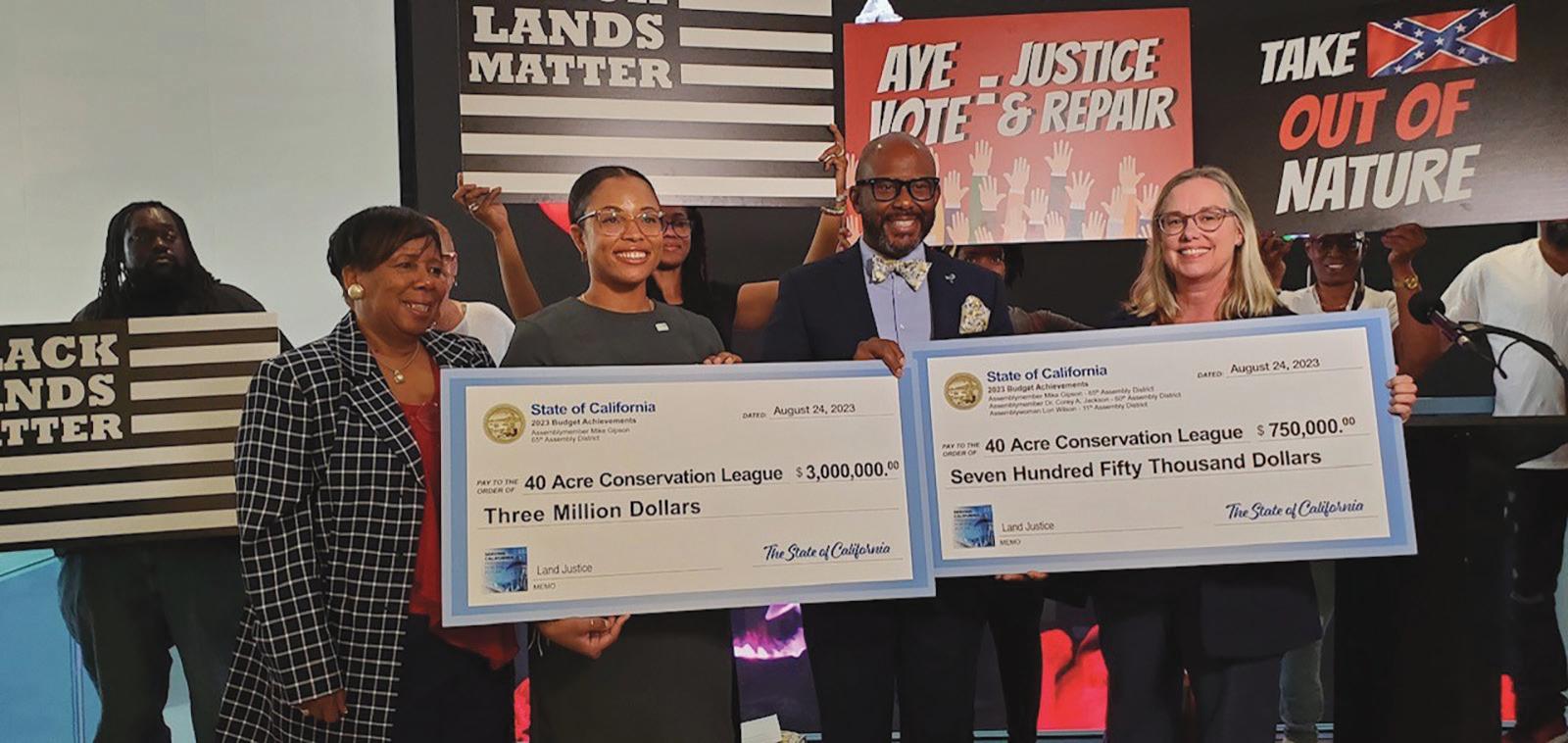
“I am so thrilled that I was able to help secure $3 million dollars for 40-Acre Conservation League’s first land acquisition,” said Gipson. “This remarkable achievement is a gateway for more people of color to enter the conservancy space, and it demonstrates that when like-minded organizations unite for a common cause, they can achieve remarkable results.”
The 40 Acre Conservation League is a nonprofit land conservancy that aims to protect nature by connecting people to it, especially people of color. It also wants to acquire land for economic, environmental, and recreational
justice.
“With the support and partnership of Assemblymembers Mike Gipson and Lori Wilson, we’re excited and humbled to make history as the first Blackled land conservancy in California,” said Jade Stevens, President of the 40 Acre Conservation League. “Today represents a strong step forward in rectifying historical wrongs, restoring dignity, and providing the foundation for economic empowerment and social equity. We look forward to what lies ahead.”
California Announces New Efforts to Fight Hate and Discrimination
As the rate of hate crimes continues to increase in California, Gov. Gavin Newsom announced additional
funding, resources and guidance designed to protect impacted residents.
Allocations include $91.4 million to 173 local organizations across the state to support victims, provide resources, and facilitate anti-hate prevention measures. The first major statewide media campaign entitled “CA vs Hate” with print, radio, and digital ads will run in English, Spanish, Chinese, Vietnamese, Tagalog, Korean, Tongan, Mixtec, and Hmong. The campaign will focus on traditionally hard-to-reach communities. And a letter to all public-school leaders in California highlighting the legal responsibilities to ensure ethnic studies curricula are appropriate and do not reflect or promote bias, bigotry or discrimination.
“An attack on any of our communities is an attack on everything we stand for as Californians,” said Newsom in a press release. “As hate-fueled rhetoric drives increasing acts of bigotry and violence, California is taking action to protect those who are targeted just for being who they are. We’re bolstering our support for victims and antihate programs and tackling ignorance and intolerance through education to prevent hate from taking hold in our communities.”
The announcements come on the heels of a Southern California shop owner being shot and killed because a rainbow pride flag hung outside her clothing store. In the first month since the Governor launched the “CA vs Hate” hotline, there have been 180 reports of hate acts across California.
The Gardena Jazz Festival Celebrates Its 20th Anniversary with Thousands of Music Lovers.
The 20th Annual Gardena Jazz Festival, one of the largest events for the city, took place at Rowley Memorial Park in Gardena on Sunday, August 27.
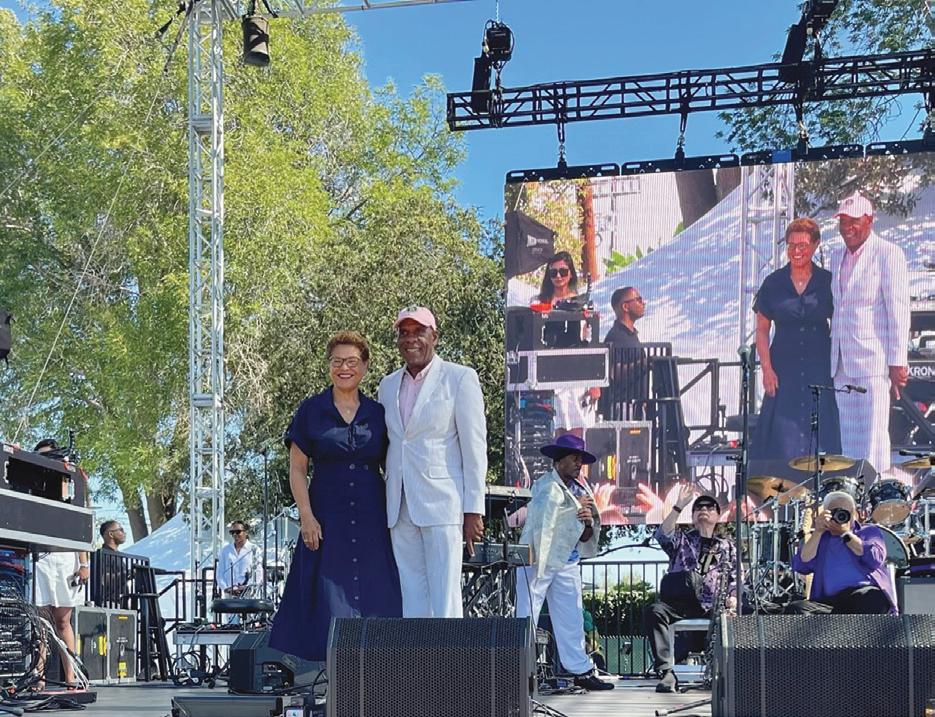
Sen. Bradford (D-Gardena) founded the Gardena Jazz Festival in 2003 and serves as Chair of the Gardena Jazz Festival Committee, which is responsible for putting
this event together.
According to Bradford, “This festival began as a free event at a time when the city was struggling financially. As the city faced difficult cuts, the Gardena Jazz Festival signaled new hope. The festival brought Gardena together to enjoy great music and celebrate community pride; all at no cost to the city. Over the years, more than 100,000 people have attended.”
This year, about 7,500 people enjoyed the performances of Boney James, Damien Escobar, Family Stone Band, Brandee Younger, Ragan Whiteside, and The Fernando Pullum Community Arts Band.
On site, there were vendors selling a range of items, including food, clothing, hats, jewelry, and skin care products. Joining the jazz lovers and local community members at the popular festival were Los Angeles Mayor Karen Bass, and U.S Congress women representing the Los Angeles area, Maxine Waters and Sydney Kamlager.
Herb Boyd: A Lifetime of Activism, Writing, and Legacy
By Stacy M. Brown NNPA Newswire Senior National CorrespondentHerb Boyd, a stalwart of American journalism, education, and activism, has spent his life elevating the narratives of the African American community. Born on November 1, 1938, in Birmingham, Alabama, Boyd’s journey led him from the turbulent racial tensions of Detroit, Michigan, to becoming a celebrated figure in academia and writing.
His life is a testament to the indomitable spirit of a generation that stood up for civil rights and social change. Further, his connection to Malcolm X, a transformative leader, shaped his path early on. In a riveting interview inside the National Newspaper Publishers Association’s (NNPA) headquarters in Washington, Boyd discussed his life and career, which include authoring 30 books but, perhaps most importantly, fighting for freedom, justice, and equality.
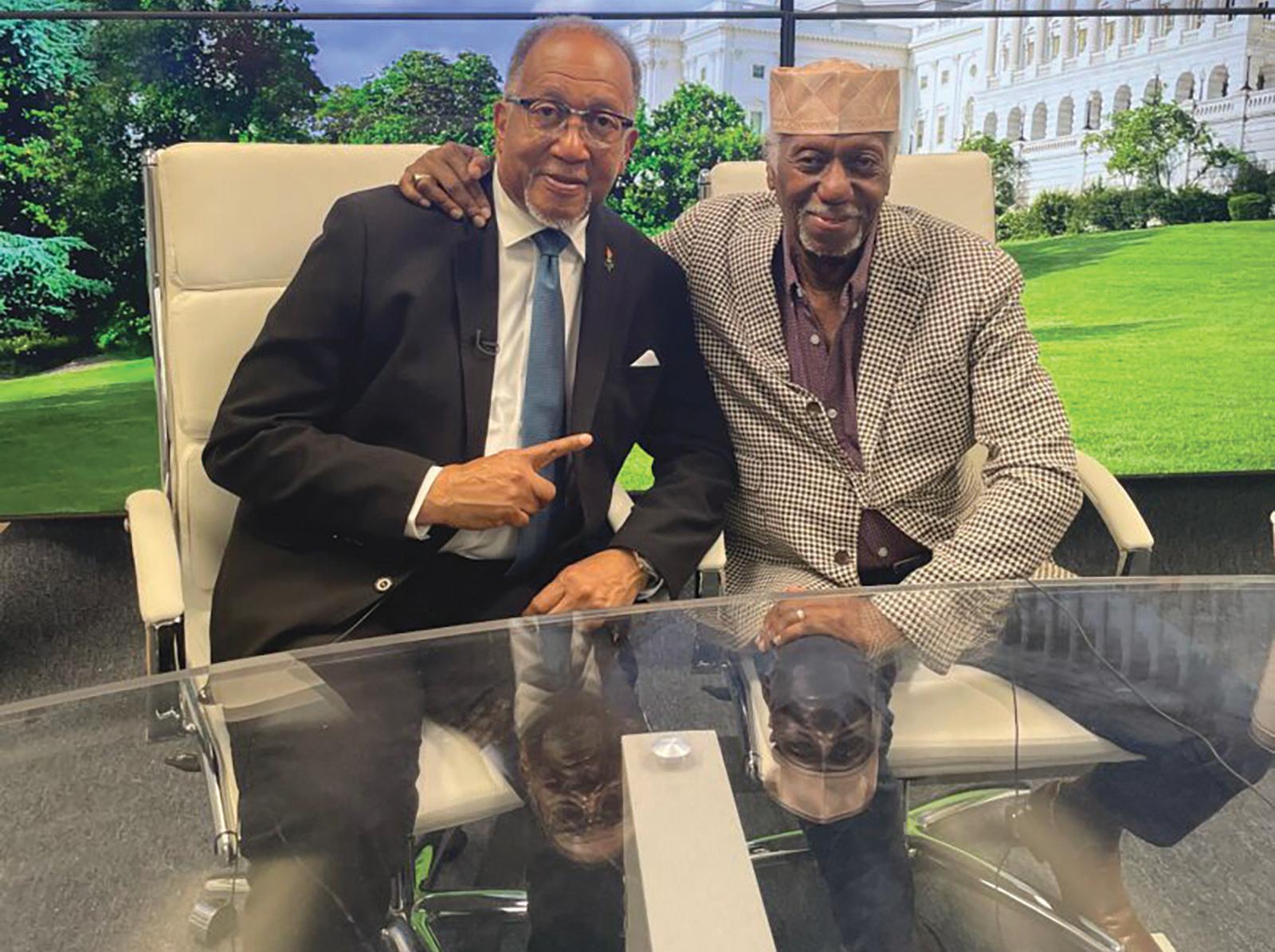
“I call myself a Triple-A man. Not the automobile club, but activist, academic, and author,” Boyd said while inside the NNPA’s sprawling studios filming an episode of the PBS-TV and PBS-World show, The Chavis Chronicles. “The activist came first, and that put me in the streets and in contact with many vibrant leaders,” he recalled.
While not precisely a “Johnny Come Lately,” Boyd was in lockstep with other activists. But one has always touched him more deeply than any of the others. “Malcolm is my centerpiece; my activism grew out of him,” Boyd asserted.
It was in the early 1960s that Boyd met Malcolm X and attended one of his lectures at the Detroit Temple No. 1. He said the experience left an indelible mark on him, igniting his passion for activism. Malcolm’s emphasis on education led Boyd to enroll at Wayne State University, aligning his academic pursuits with his activist ideals.
Boyd’s leadership during Detroit’s activism-rich period of the 1960s set the stage for his subsequent contributions to academia and journalism. He said the parallel rhythms of Detroit and Harlem, both significant hubs of African American culture and political engagement, deeply resonated.
“These cities became the crucibles in which my ideals took shape,” Boyd insisted. A columnist for the New York Amsterdam News, Boyd’s work includes a prolific collection of books that delve into African American history, culture, and civil rights struggles. Titles like “Autobiography of a People,” “Jazz Space Detroit,” and “African History for Beginners” stand as monuments to his dedication to preserving and amplifying the stories of the marginalized. Writing, for Boyd, is a form of activism – a way to give voice to those who lived through history and to expose the injustices that must be confronted.
Throughout his career, Boyd has garnered numerous awards and honors, including the American Book Award in collaboration with Robert Allen and several first-place awards from the New York Association of Black Journalists.
“Our history is a testament to our resilience,” Boyd stated. “From the horrors of slavery to the civil rights movement, African Americans have never wavered in their pursuit of progress. Our challenges today require unity and a commitment to healing and progress. Just as the 1960s were a vital period, we’re still grappling with understanding that era’s impact and lessons. The path forward involves learning from history, bridging divisions, and continuing the fight for justice with hope and determination.”
Watch Boyd and others this fall on The Chavis Chronicles on PBS.
A Committee Starts to Honor African American Vets

‘They Dedicated Their Lives During a Time
When Racism Was at An All-Time High’
By Janell Gore South Kern SolKern County Parks and Recreation District 5
Commissioner Ucedrah Osby requested to start a committee dedicated to creating an African American Veterans Memorial. The Committee was thought of to honor the African American Vets Hall that was located in MLK Park in Bakersfield.
“The only African American Vets Hall for miles where our ancestors used to come and gather and celebrate being Black and having community there. That was the only place,” said Osby. Her plan for the committee is for them to come together to discuss designs and locations to honor the
African-American Veterans.
“A statue, a monument, something people can see and they can visit and they can be attached to. Something with the education around the African American history in Kern County,” said Osby. Osby stated this is important to ensure that their history is never forgotten. “So our history can live on. Our ancestors can always be remembered that they served our country. They dedicated their lives during a time when racism was at an all-time high,” said Osby. The memorial is also personal to Osby because her uncle was a veteran who used to gather in the African American Vets Hall to be with the community and “break
bread.” Her dedication to this building and honoring the vets is not recent. In 2020, she and other community members started fighting to save the building when they saw it on a surplus list.
“We said no, please save this building because it has so much rich history. It shows that we were here and that we were involved,” said Osby.
Now that the property belongs to the city, Osby requested the funds from the sale be used in District Five; therefore, while the memorial may not be where the vets hall was, it will be in district five. The committee is open to all community members who want to join, and they can contact Osby via email uosby0617@gmail.com.
“I implore them to come out and be a part of the planning to pay homage to our elders in the Black community,” said Osby.
Black Census Project Quadruples Participation
By Stacy M. Brown NNPA Newswire Senior National CorrespondentThe Black Futures Lab announced that it had reached a historic milestone in the Black Census Project survey, which will conclude in October 2023. The most extensive survey of Black people in the United States has gathered nearly 130,000 responses from all 50 states, four times bigger than the 2018 Black Census.
“Going into another presidential campaign season, we know that Black communities are still being undercounted and under-engaged,” said Alicia Garza, Founder and Principal of Black Futures Lab, who began designing the Black Census Project after the 2016 election. “It is critical that we engage Black communities early and often. Every day, policy is made about us without us. “We launched the Black Census to transform that–we take the data from the Black Census and use it to inform a Black agenda that serves as a roadmap for policymakers and politicians on how to best address the needs of Black communities.”
Garza continued, noting that “The Black Census is historic and important—there is still time for you to join us and participate so that your voice can be heard.”
The Black Census Project, launched in 2018, engages communities typically under-represented in traditional surveys and policymaking. The Black Census Project is gathering information on the opinions and views of Black people. This includes demographics and areas such as LGB+ communities, trans communities, incarcerated Black individuals, Black immigrants, and Black people living in rural areas.
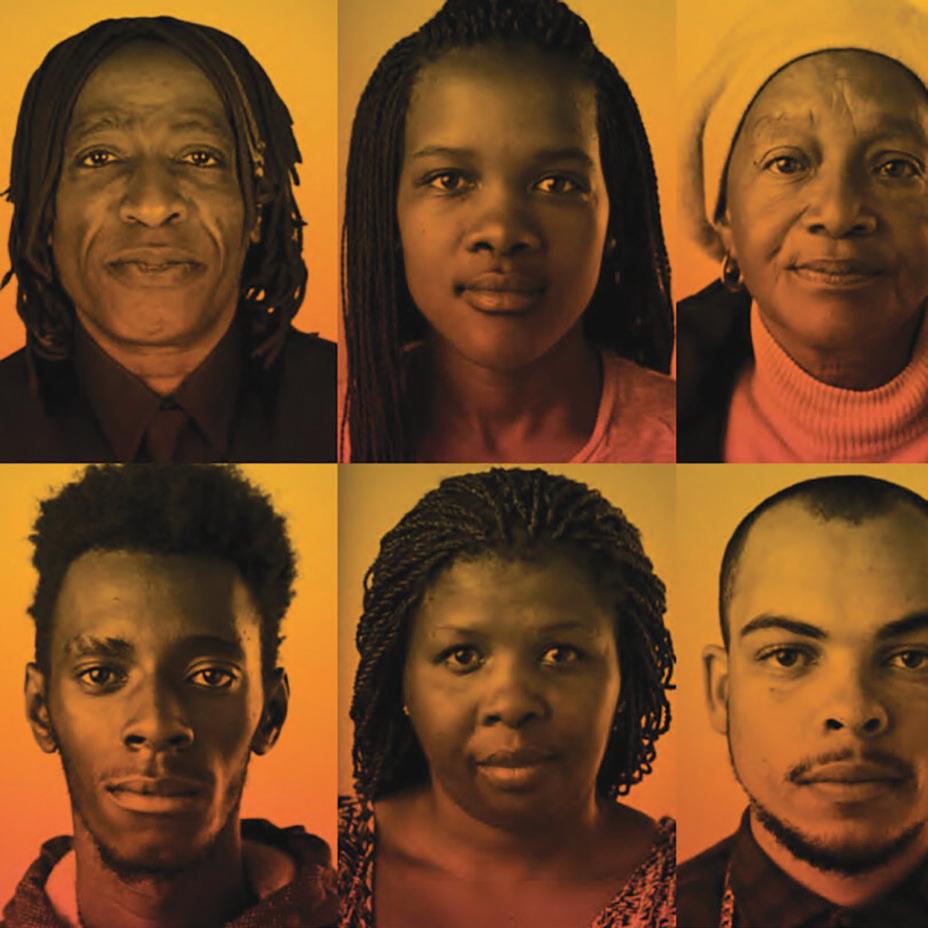
people are seen, heard, and counted,” said Aria Sa’id, Founder Emeritus of the Transgender District. “Given all the attacks on trans rights, we know Black trans folks will be the most impacted. While our rights are being taken away and our communities are being targeted, very few people are talking to trans people about what we’re experiencing, and what support we need to live dignified lives. The Black Census does this and gets information from us about our needs and experiences, and what we want to see for our futures. The experiences of Black trans people matter, not just for us, but for all Black communities.”
Once the Black Census closes in October, Black Futures Lab said it would use the survey to design and release the Black Agenda 2024 in early 2024. The Black Agenda 2024 is a policy roadmap that will inform legislators nationwide of the critical priorities of Black communities across America. The tool will also help activate and involve Black voters before elections. Officials said it would encourage Black communities to participate and use their political power to inform, influence, and impact institutions and decision-makers involved with Black people.
“With the 2024 presidential elections right around the corner, and the first GOP debate kicking off tonight, we know Black votes matter; Black people do too,” said Angela Rye, Principal and CEO of IMPACT Strategies. “To be powerful in politics, Black people must curate, shape, and push our own political agenda—a Black agenda–and the Black Census Project equips us to do that. That is why this project is tremendously important.”
According to a news release, over 30,000 Black people
in 2018. The Black Futures Lab used the results to identify pressing legislative and policy priorities, turning the survey into a national, state, and municipal policy platform to guide 2020 Presidential candidates as they devised strategies to earn the support of Black voters.

In 2022 and 2023, Black Futures Lab collaborated with over 50 Black-led grassroots organizations, more than a dozen national media partners, and Black influencers. The organization said it has reached over 129,000 Black people nationwide. Most respondents (64%) are from the South; 14% are from the Midwest, 13% are from the Northeast, and 10% are from the West. Nearly half (40%) of respondents are ages 60+; a quarter are 50–59, 17% are 40–49, 12% are 30-39, 4% are 25–29, and 4% are 18–24. Initial findings show the top three issues for Black people are:
• Low wages that are not enough to sustain a family: 39%
• Gun violence: 32%
• Schools that fail to prepare children adequately: 32%
“This is the largest survey of Black people in American history—there is nothing else that comes close,” said Michael Harriot, writer, and author of Black AF History: The Un-Whitewashed Story of America. “This is a way for people to actually know what Black voters want, and what Black voters are concerned about. It also has historical significance and gives us the ability to dispel myths about Black people with real data.” Some participants who complete the survey at BlackCensus.org will be eligible to receive a $20 gift card.
The most extensive survey of Black people in the United States has gathered nearly 130,000 responses from all 50 states, four times bigger than the 2018 Black Census.
